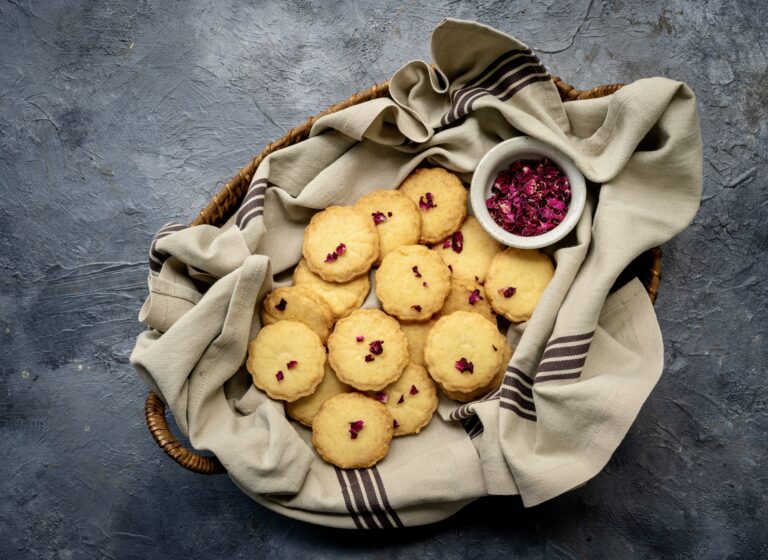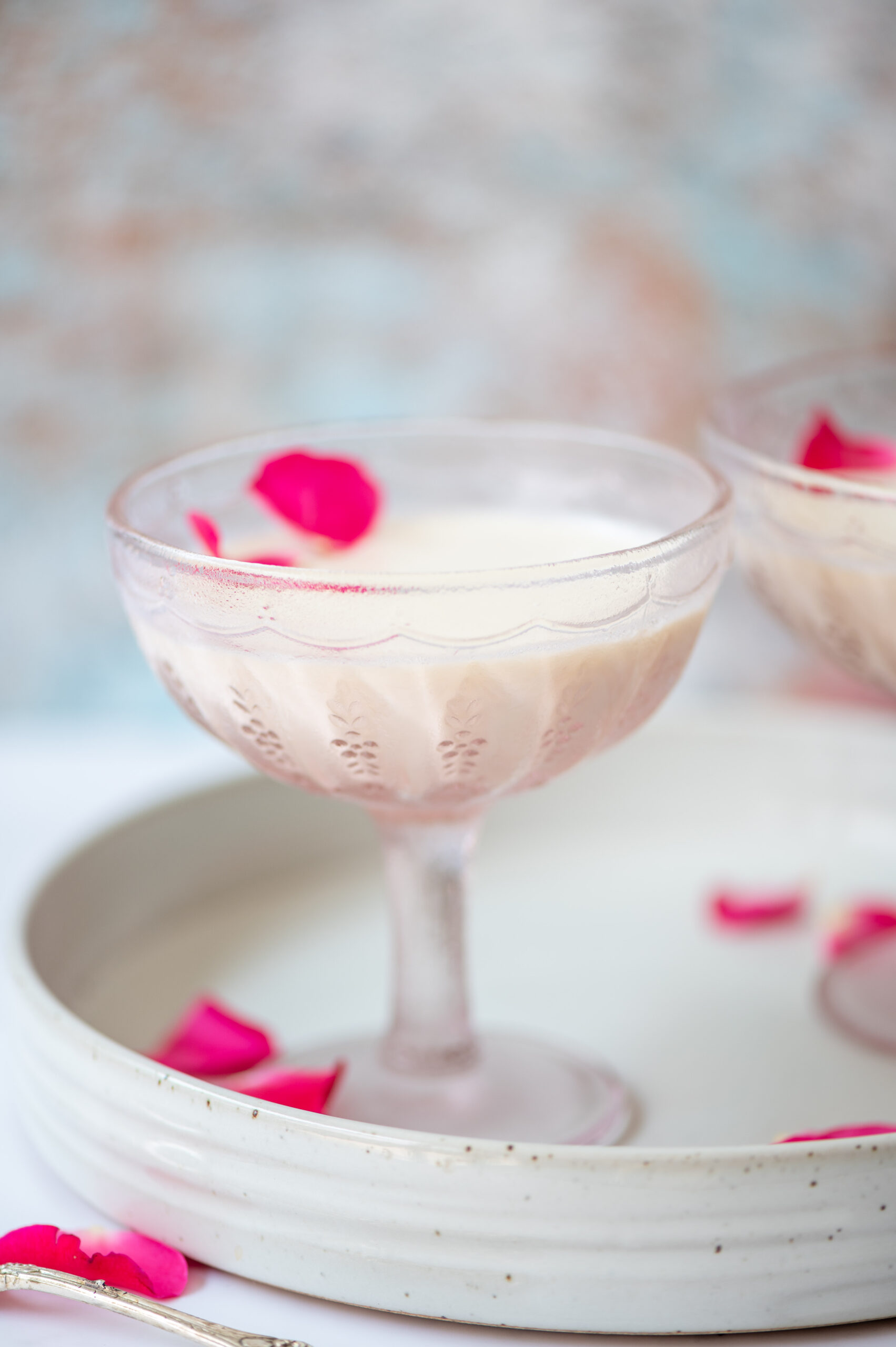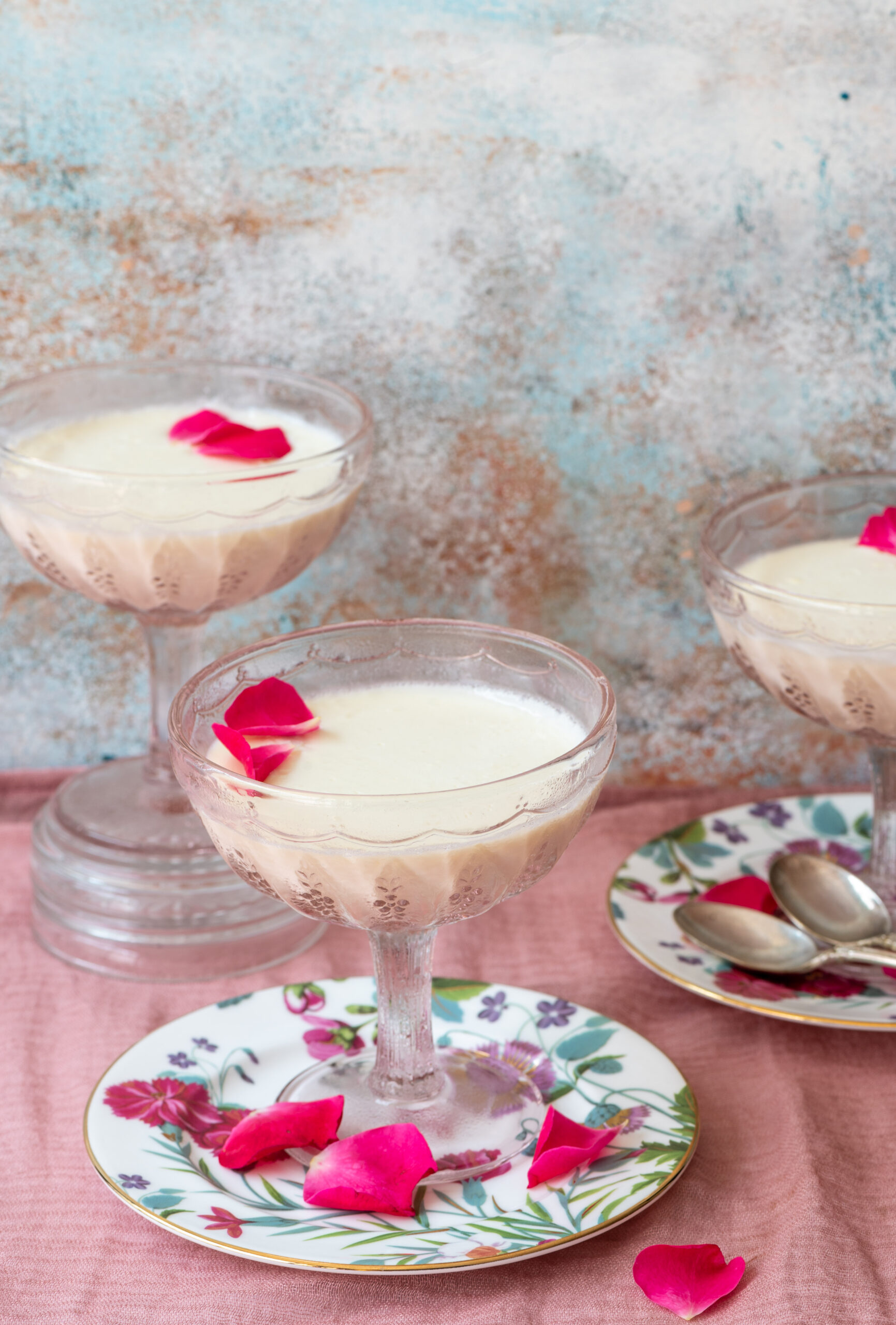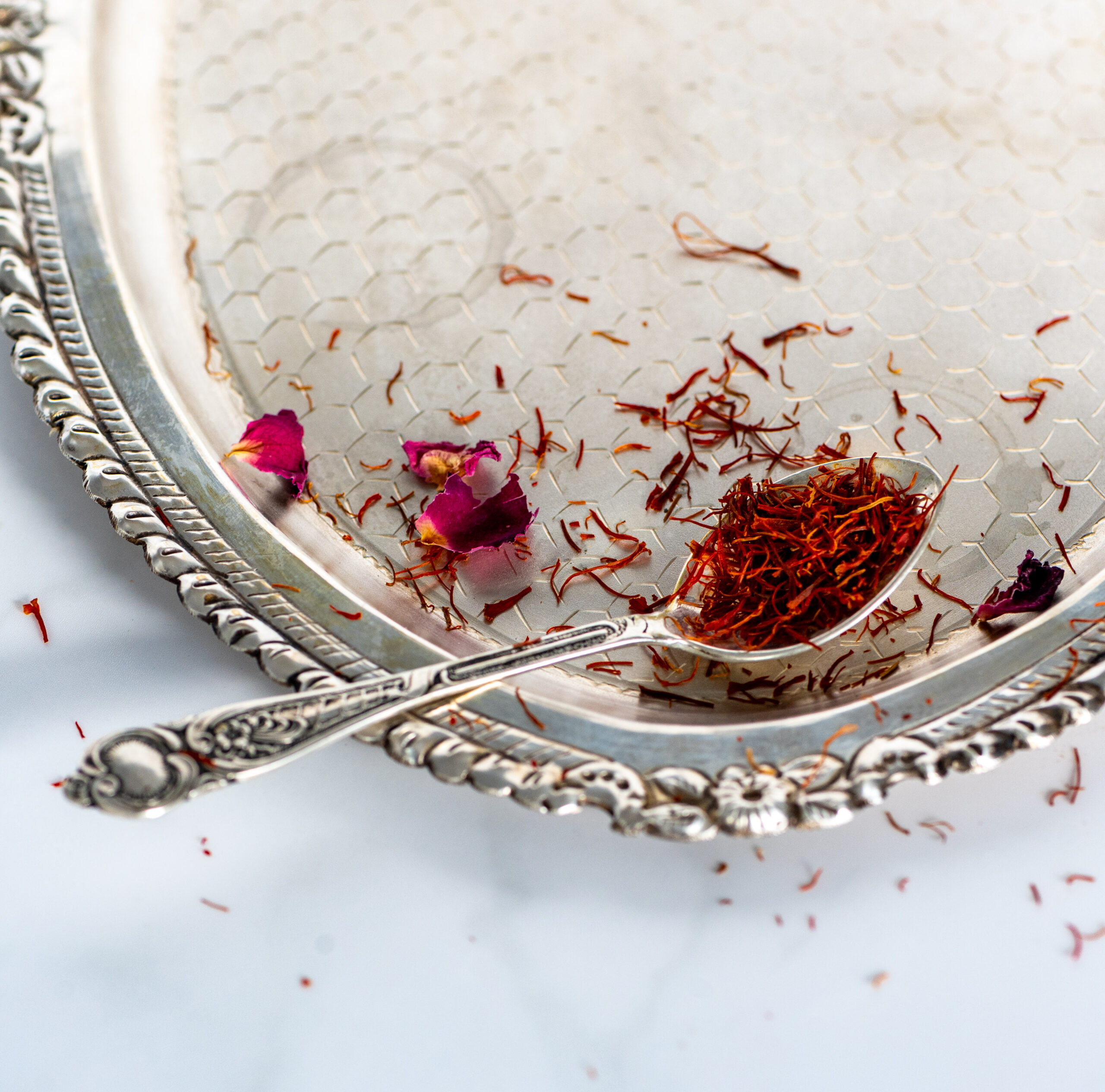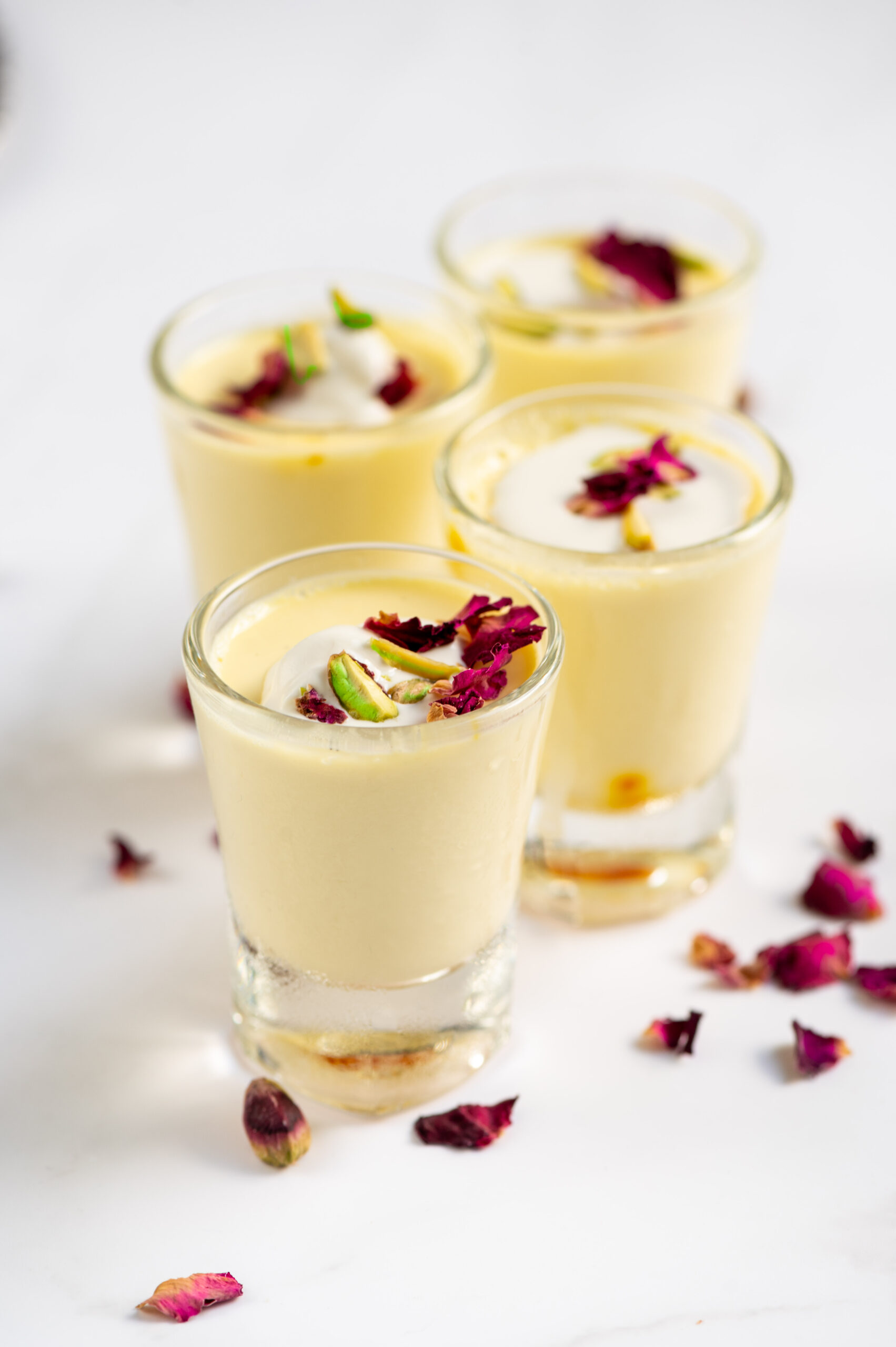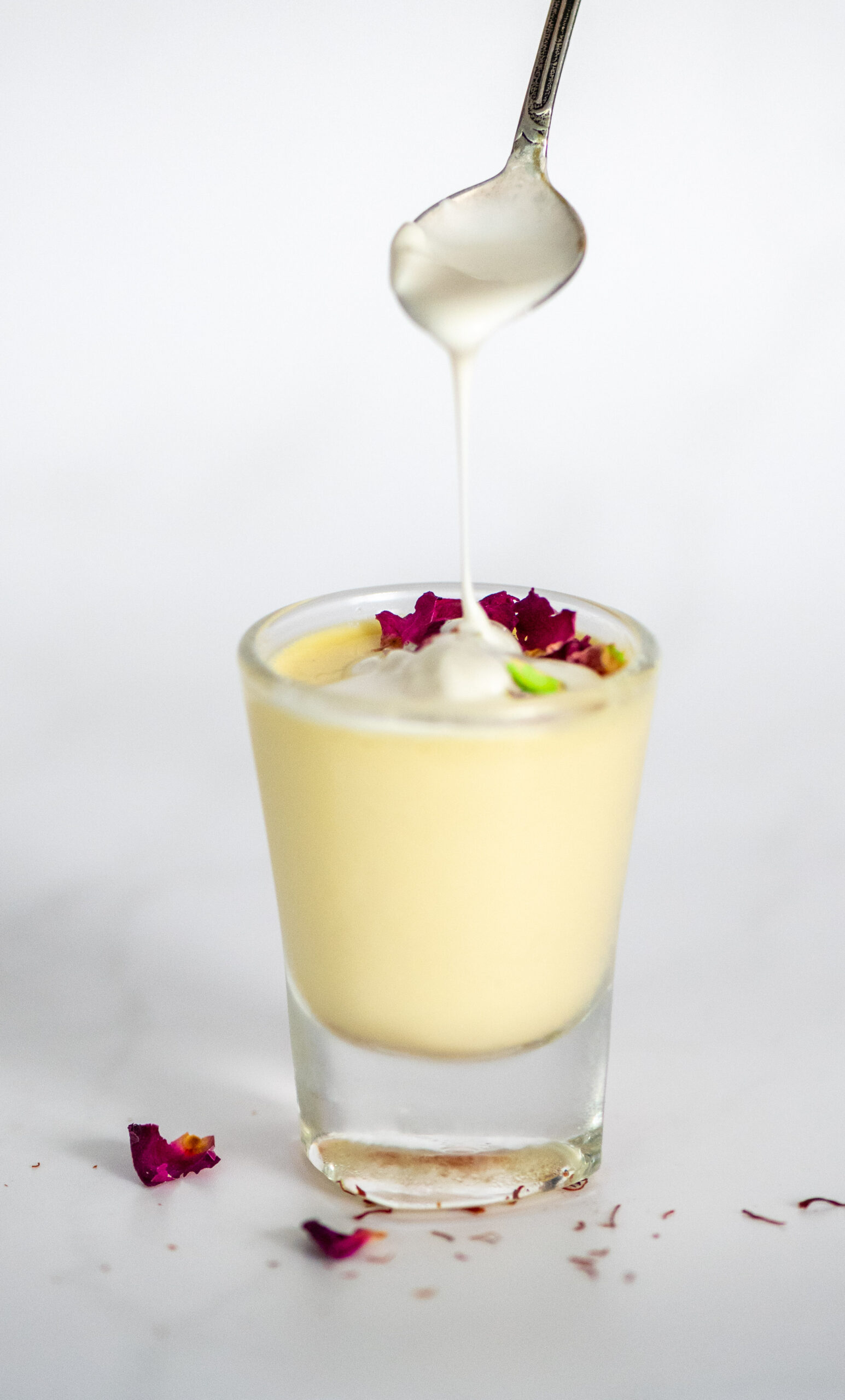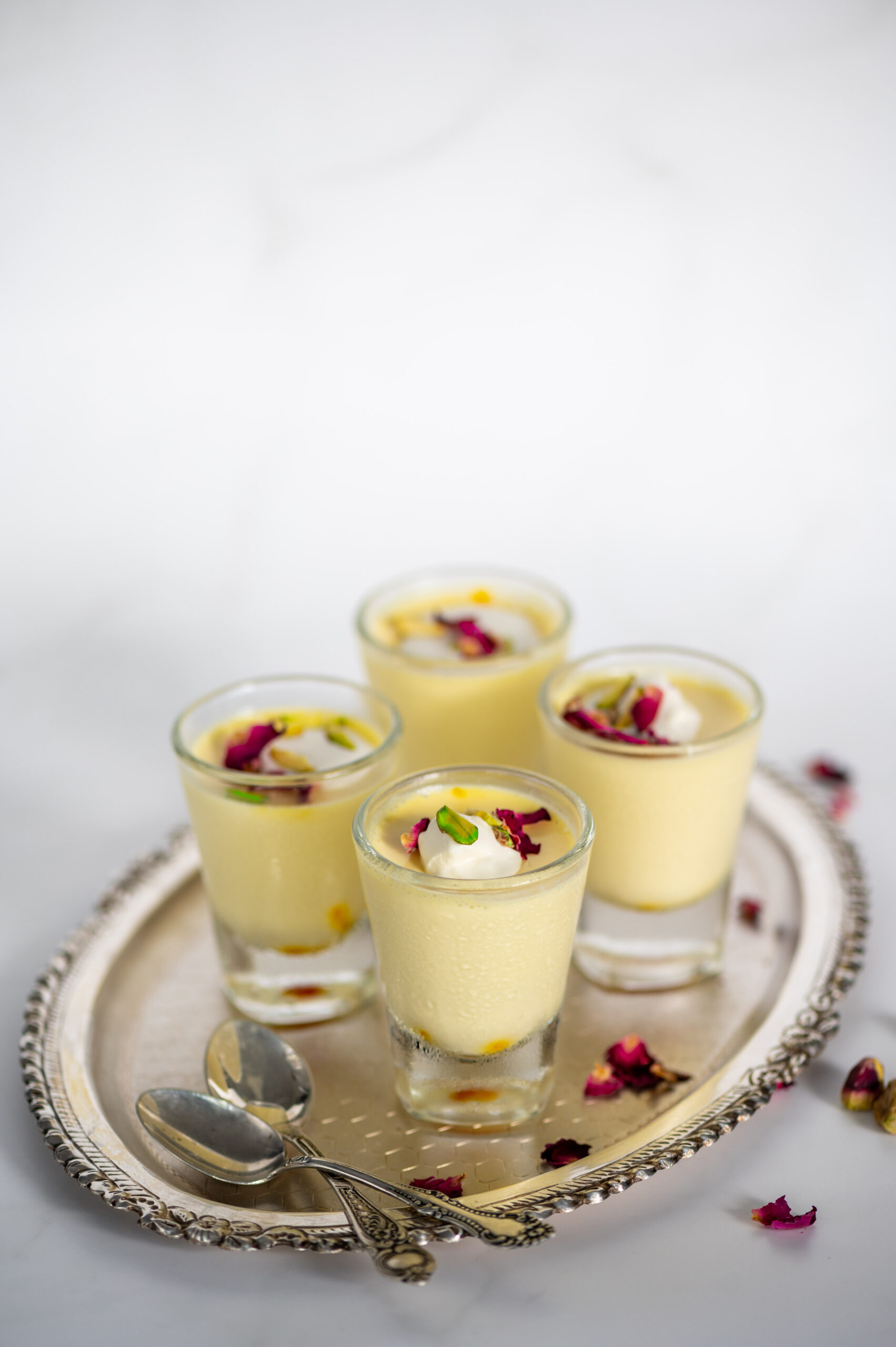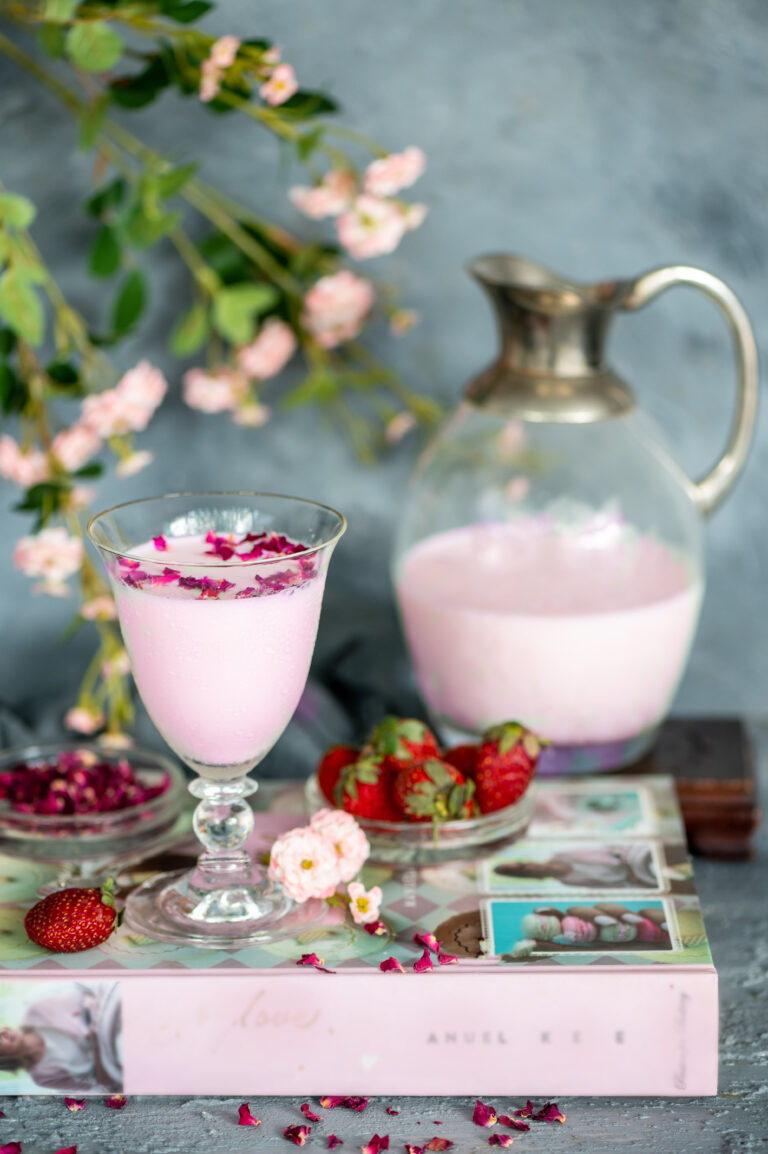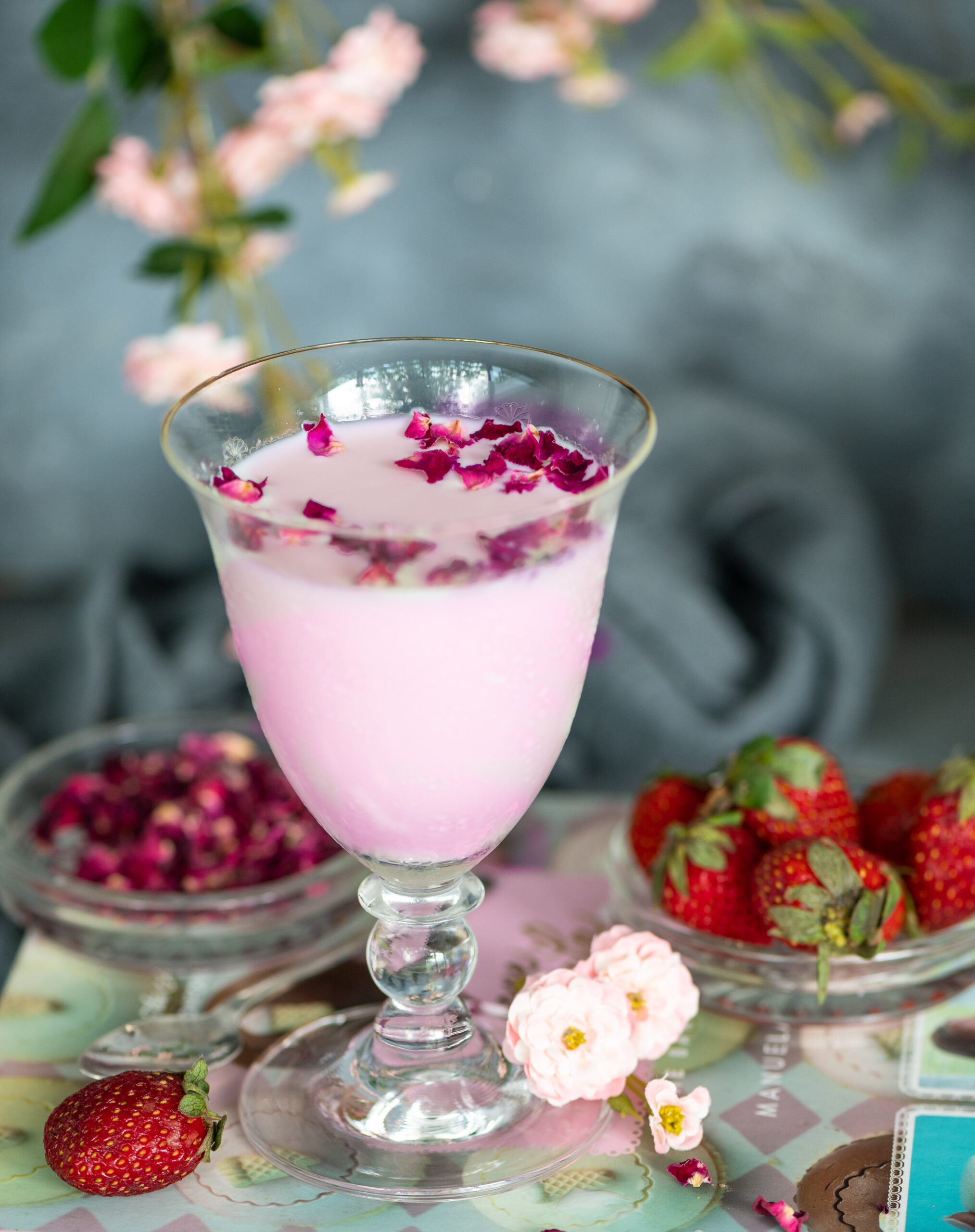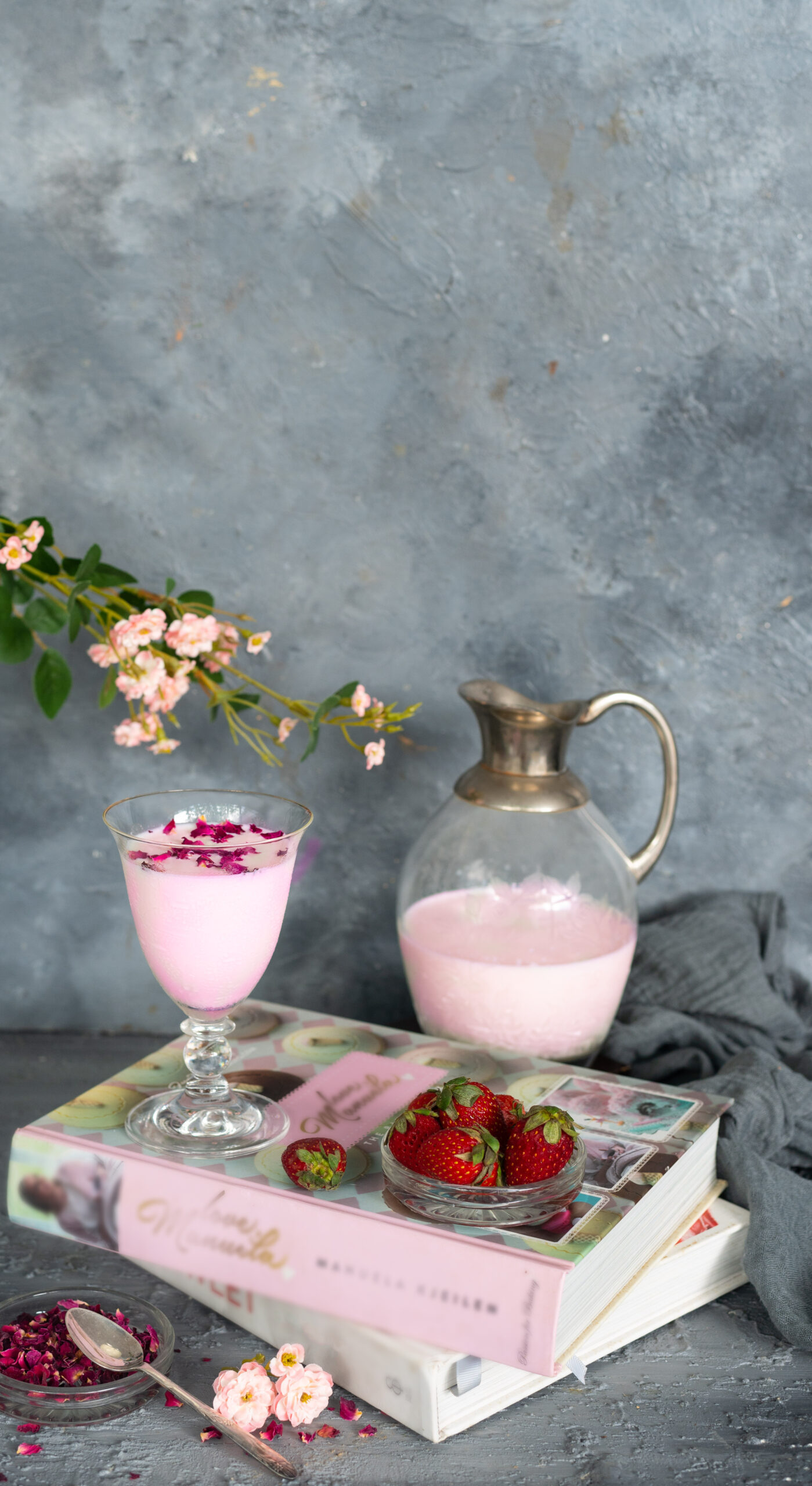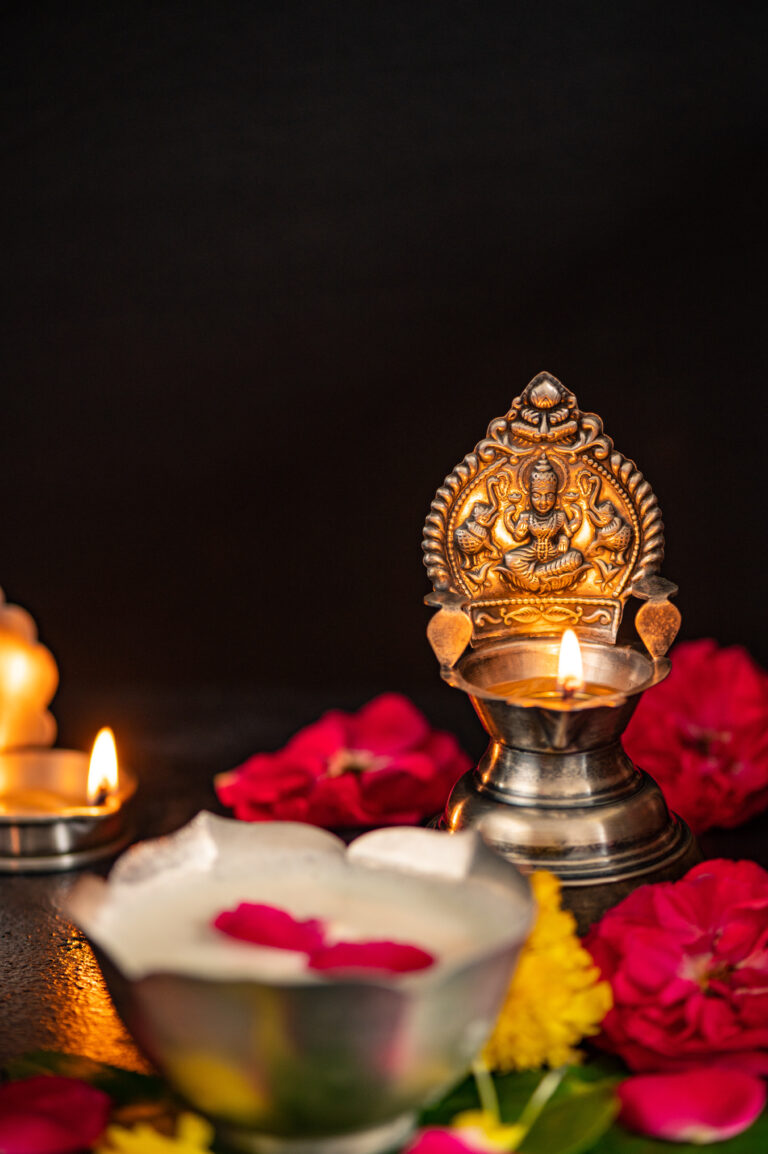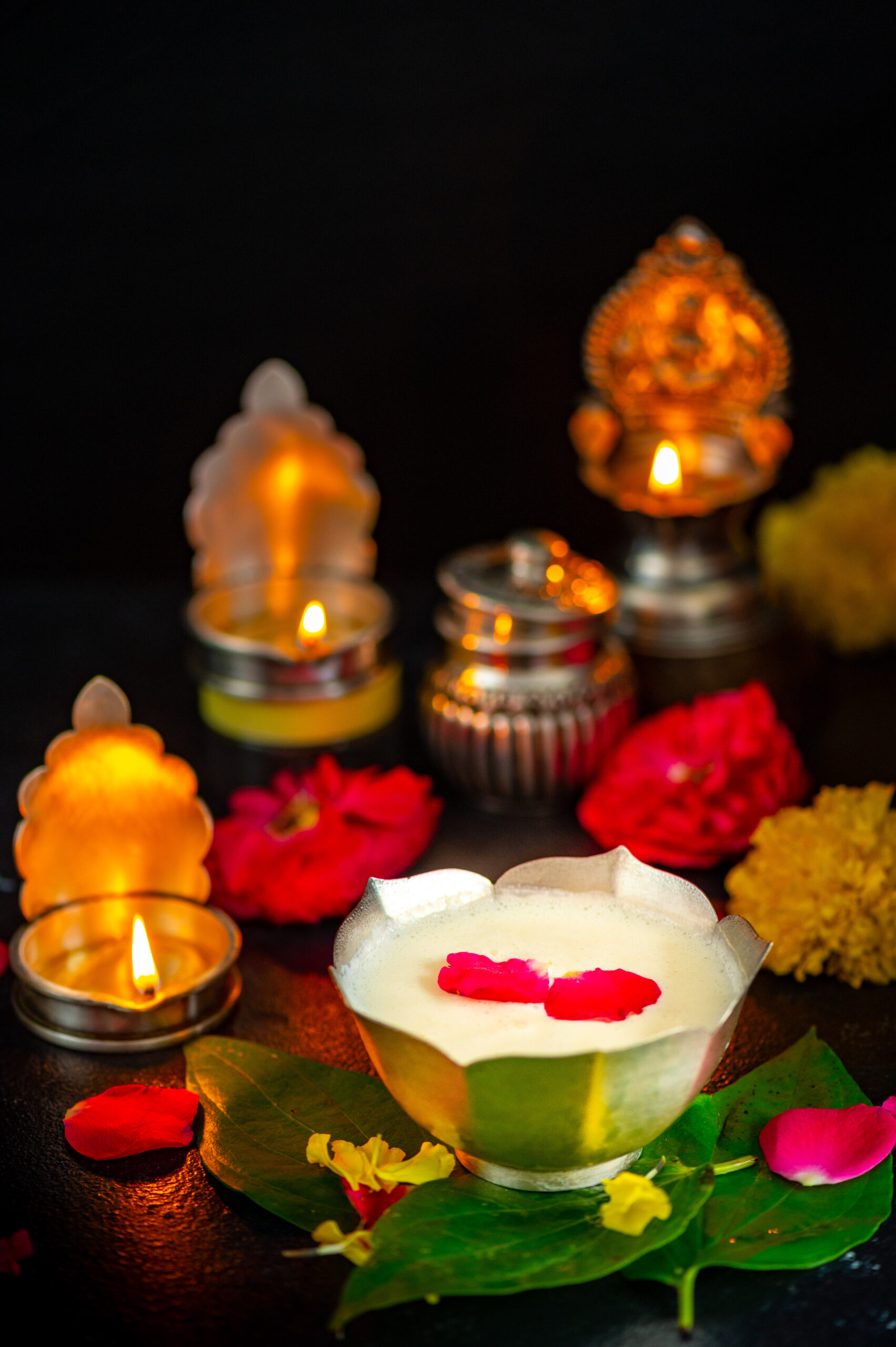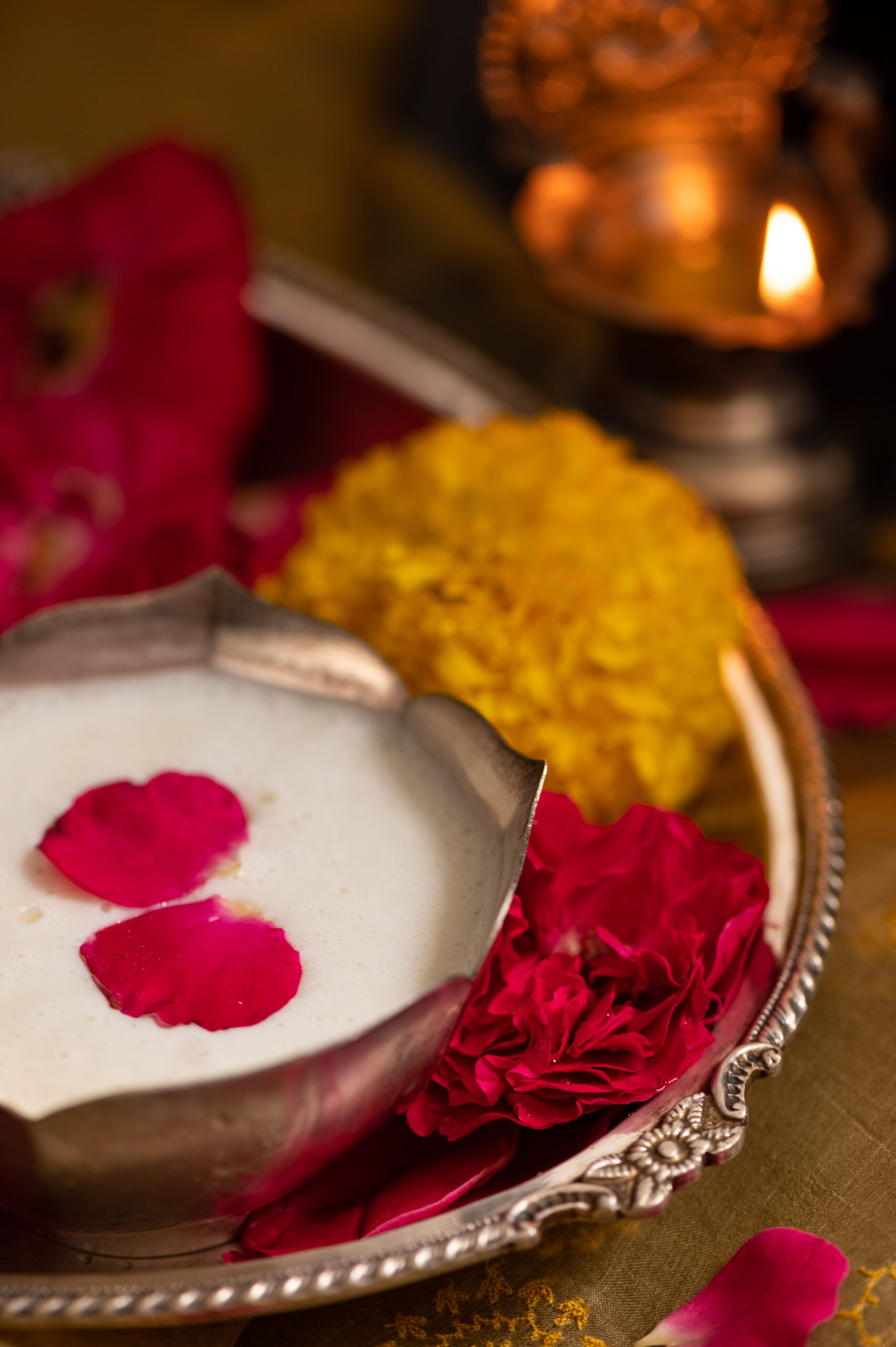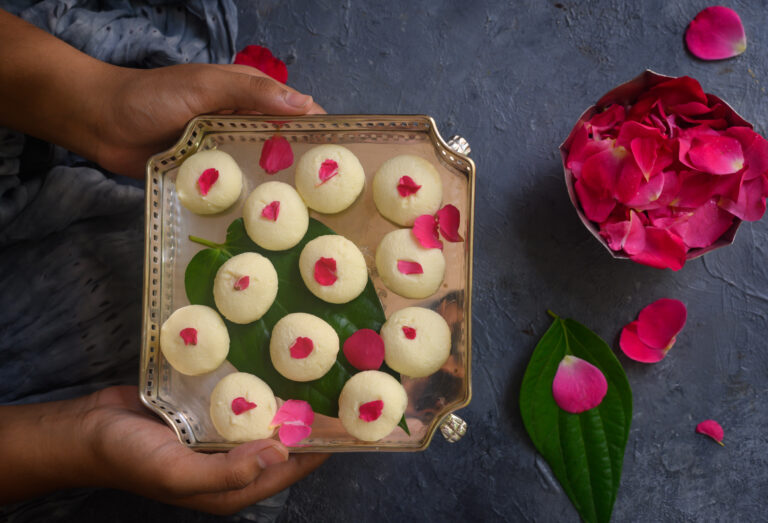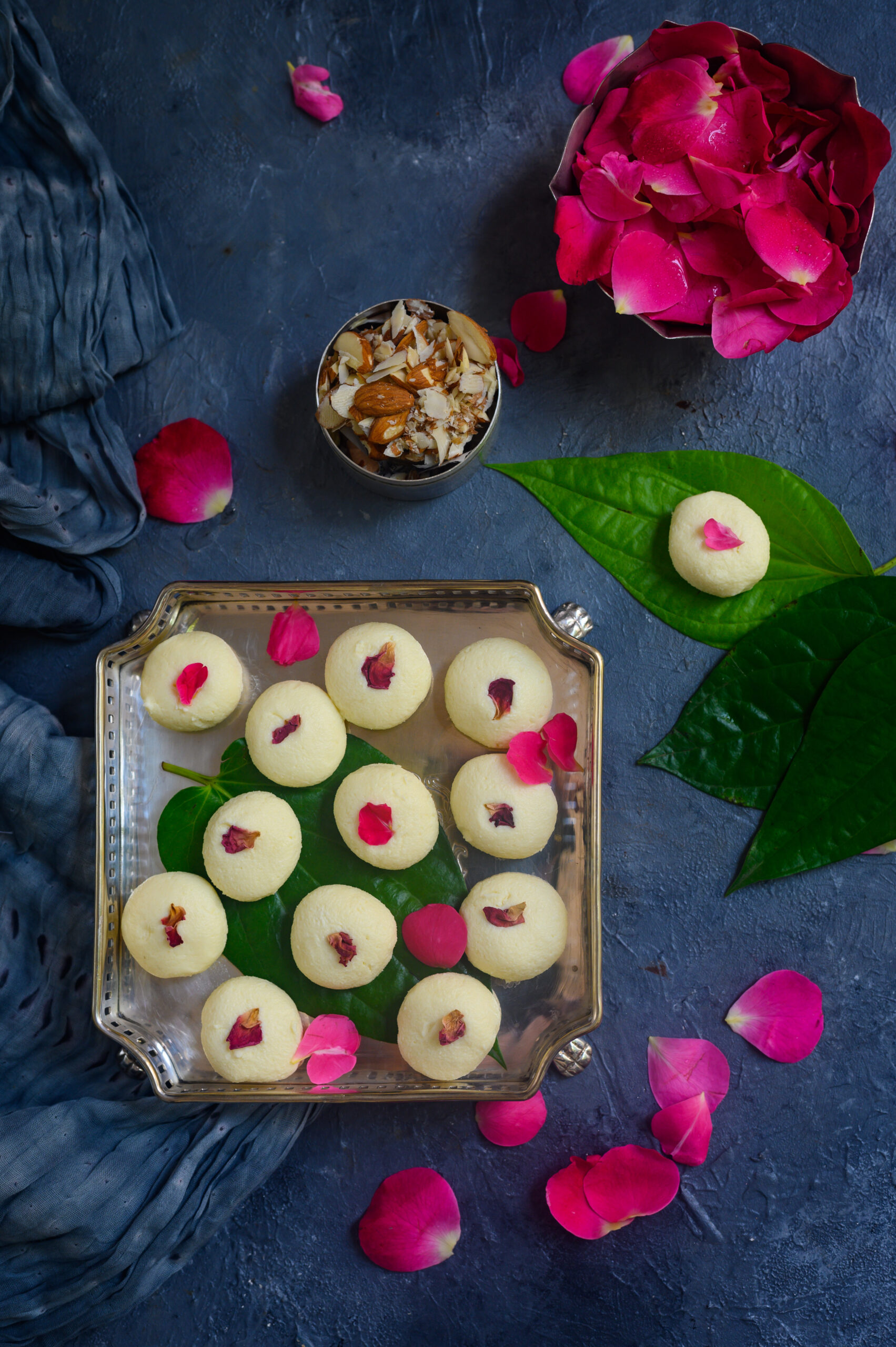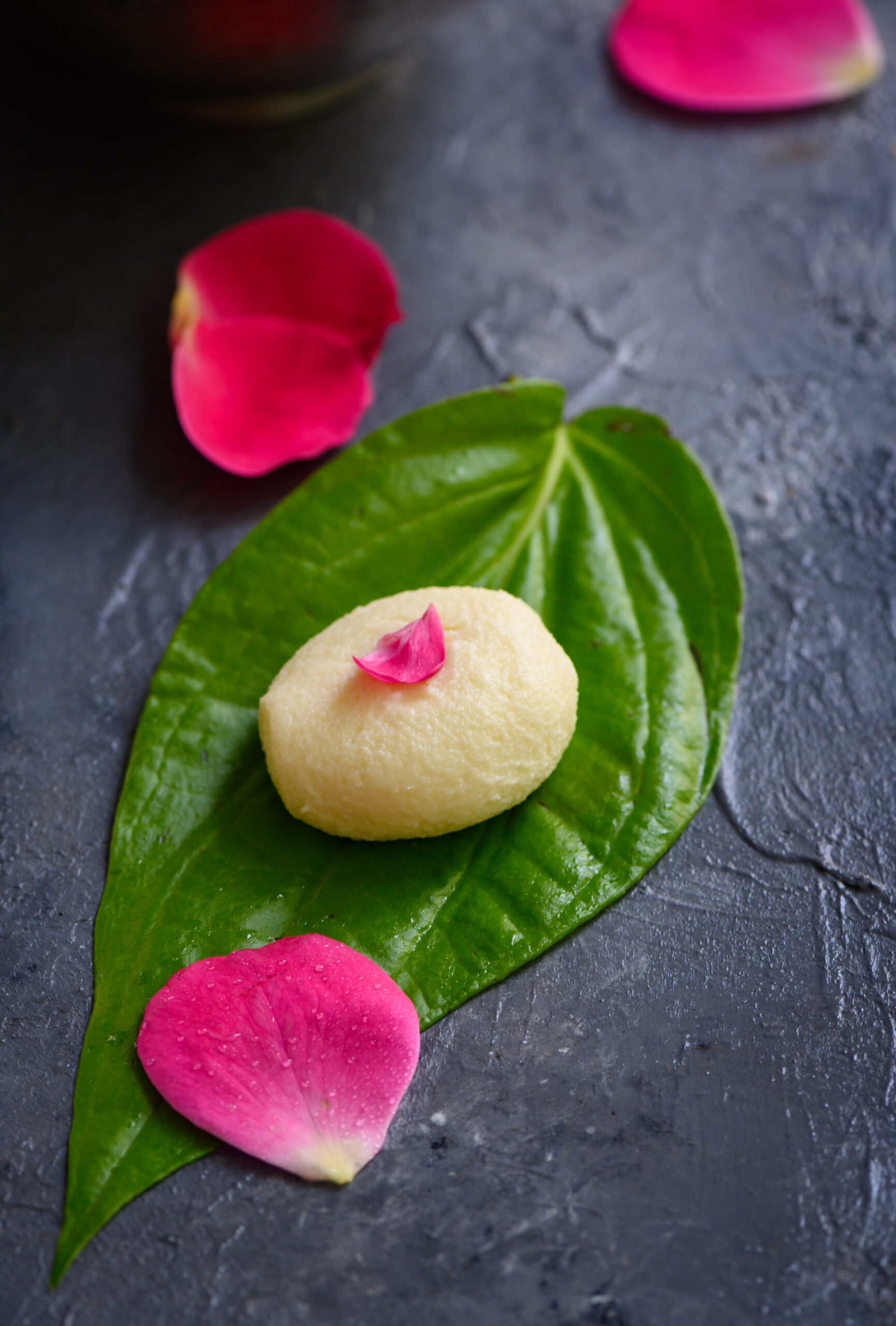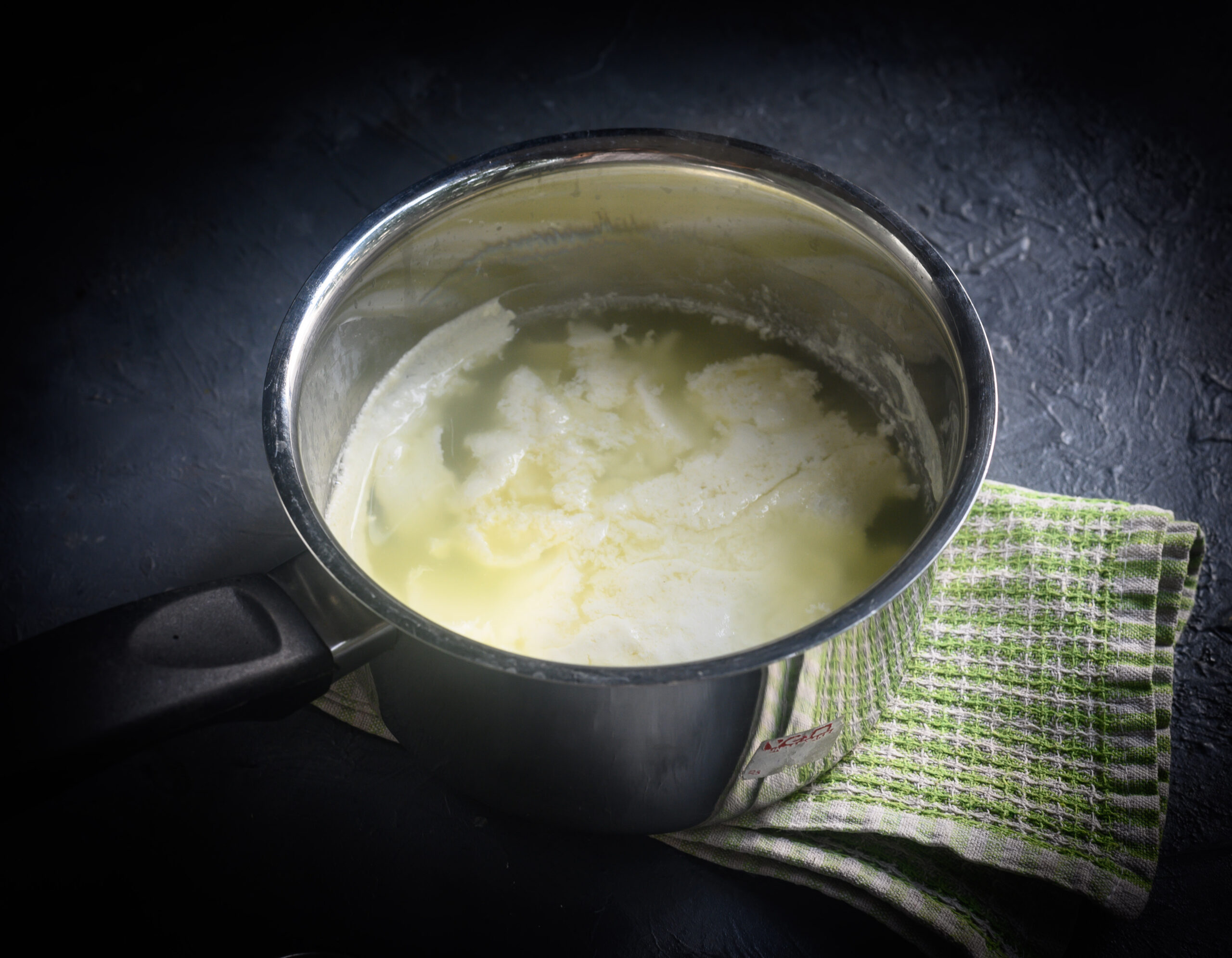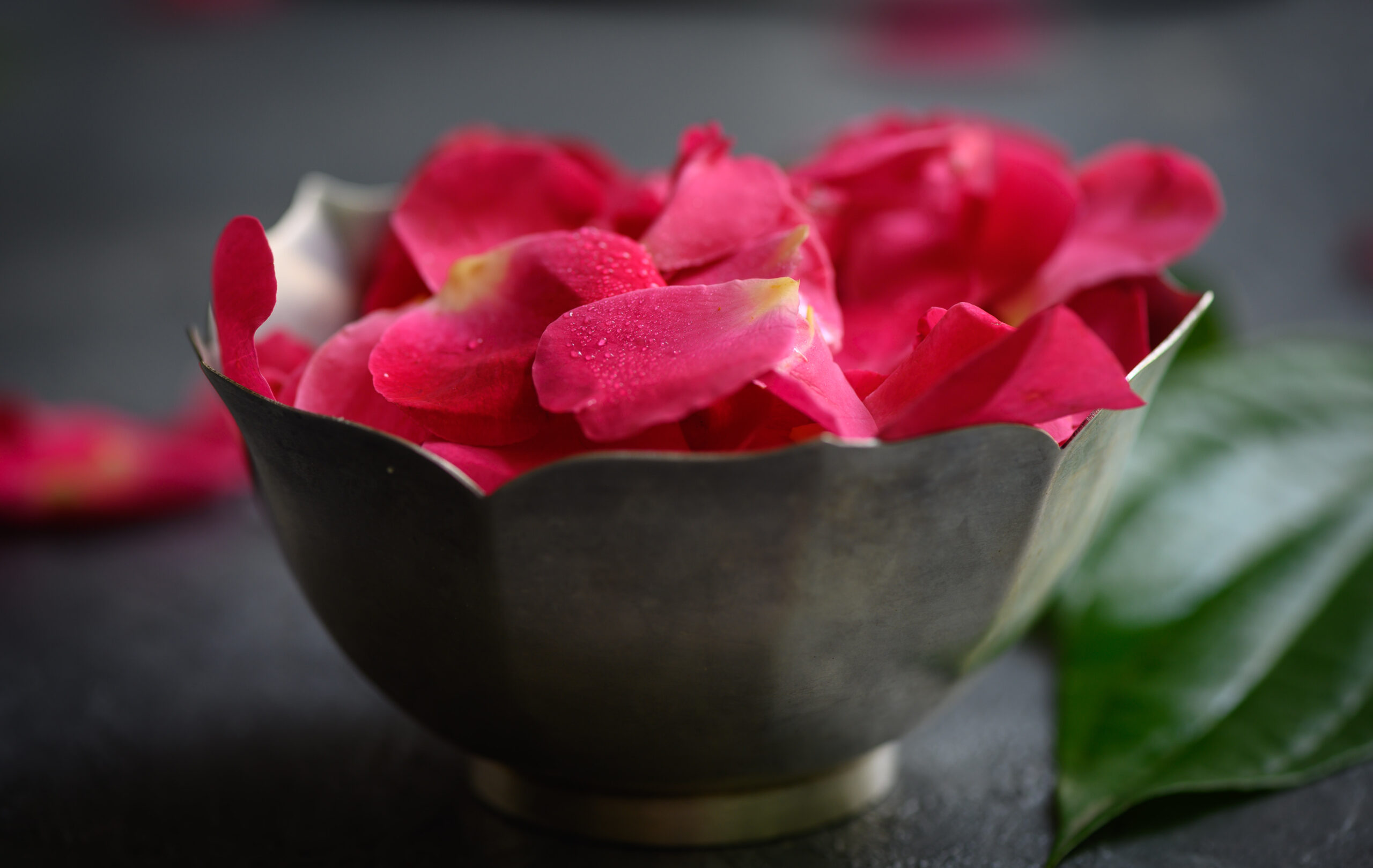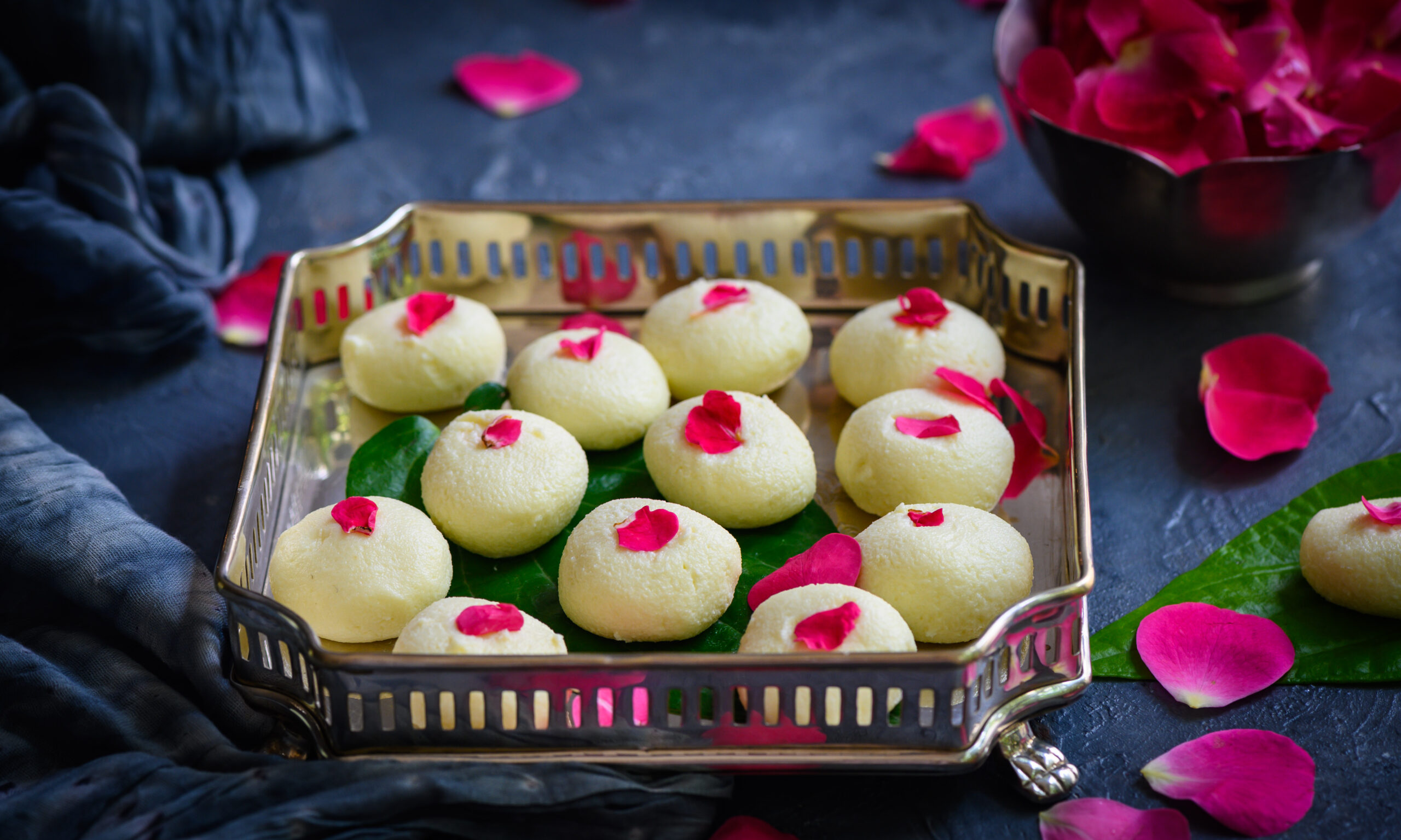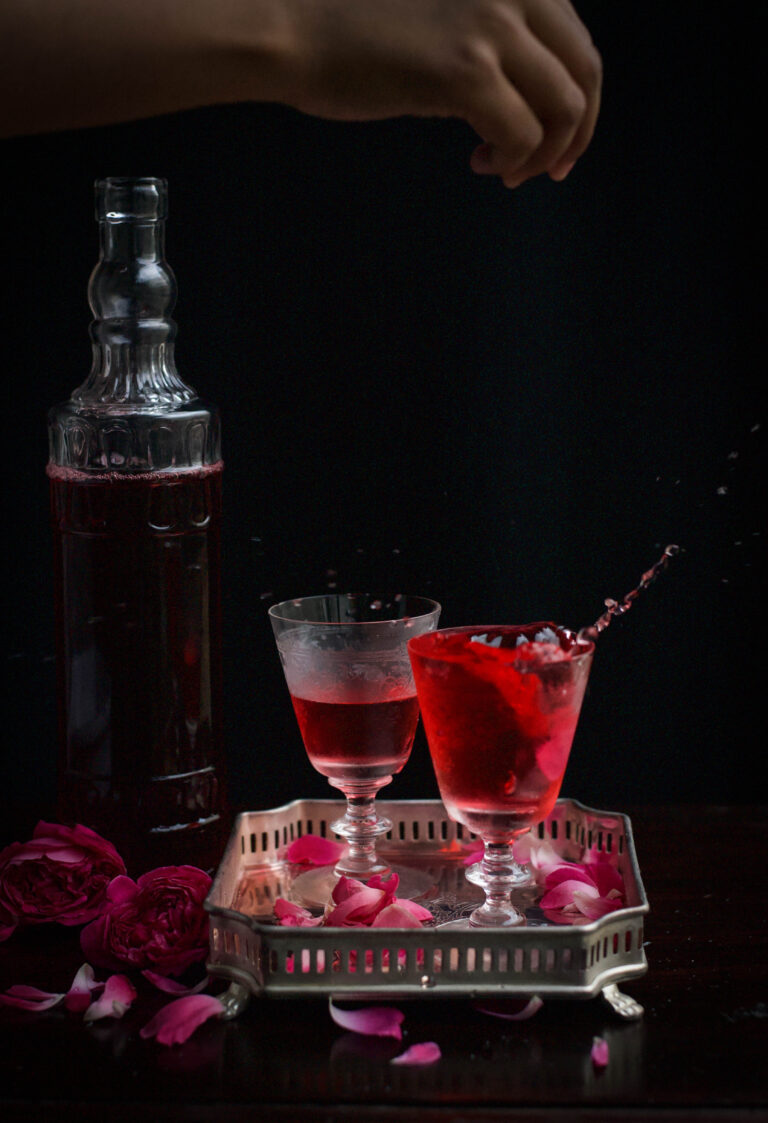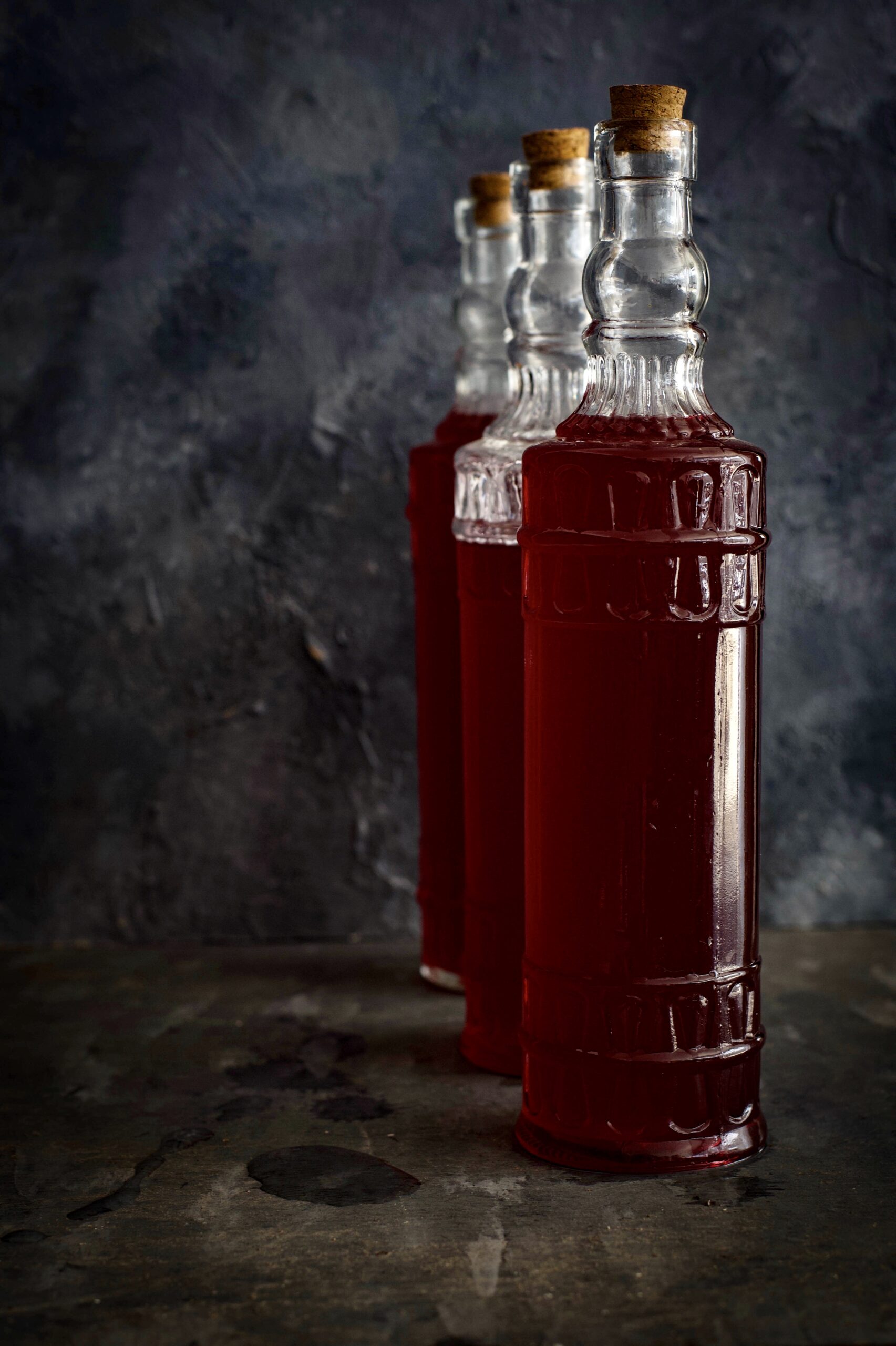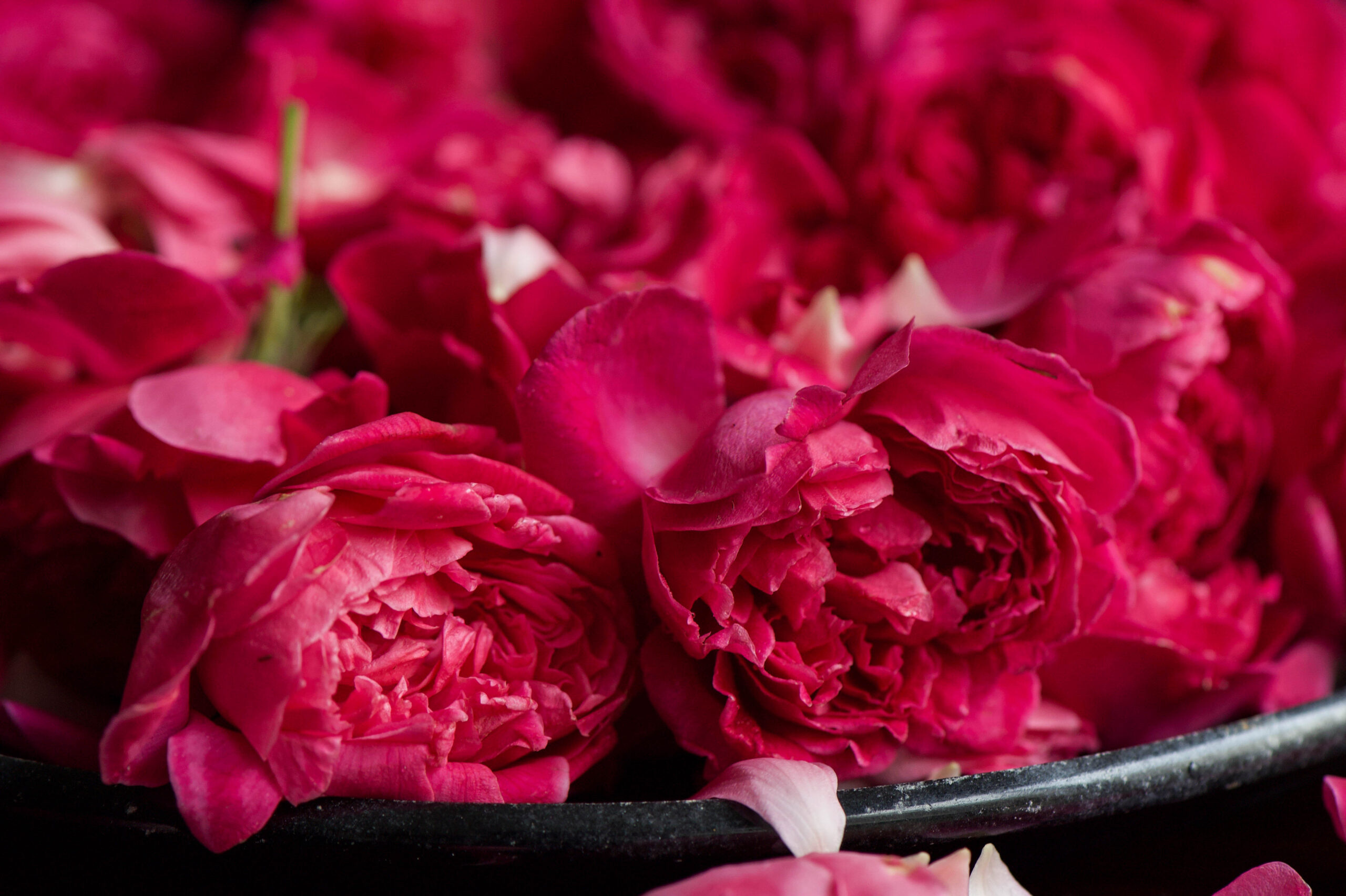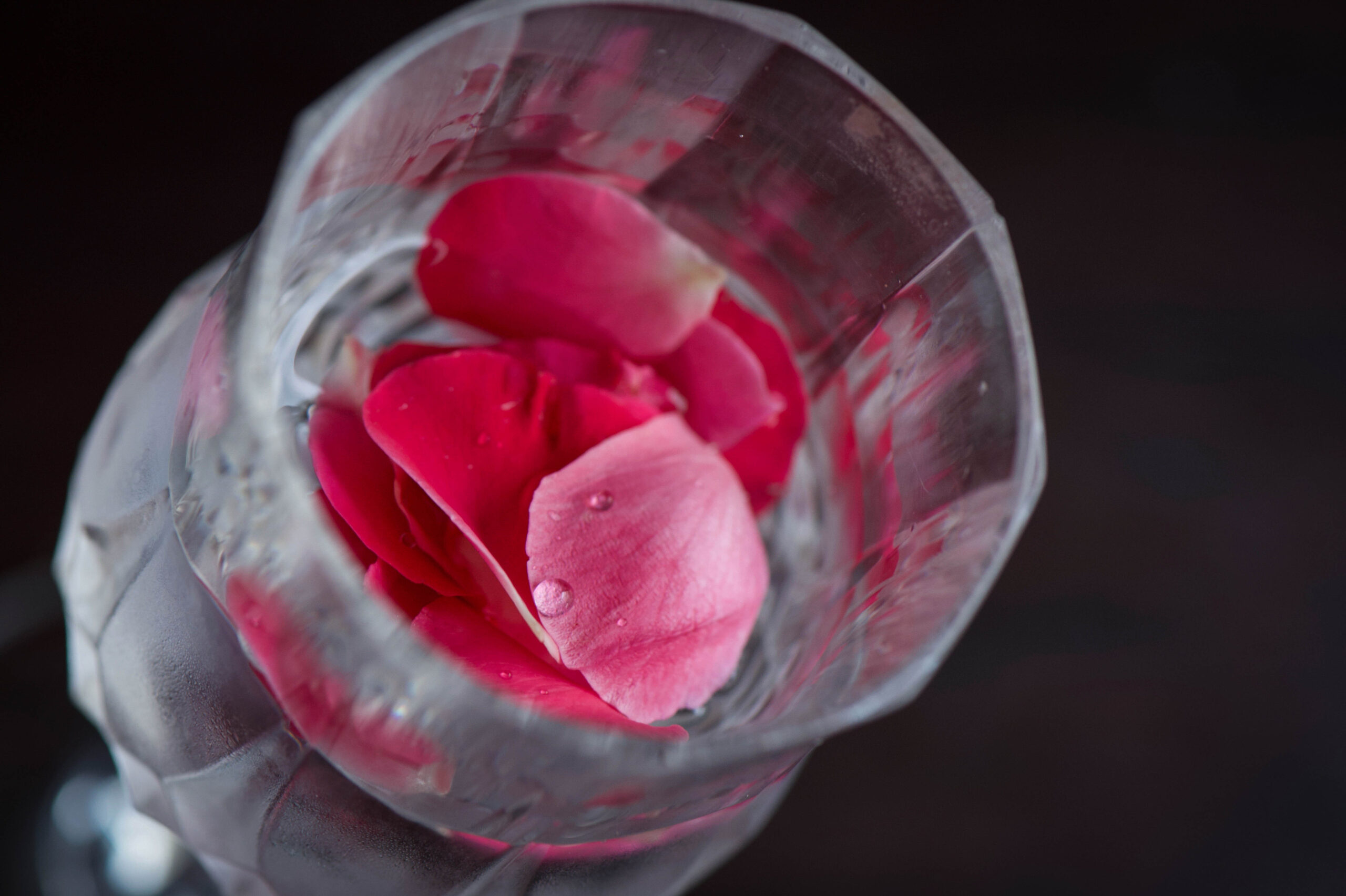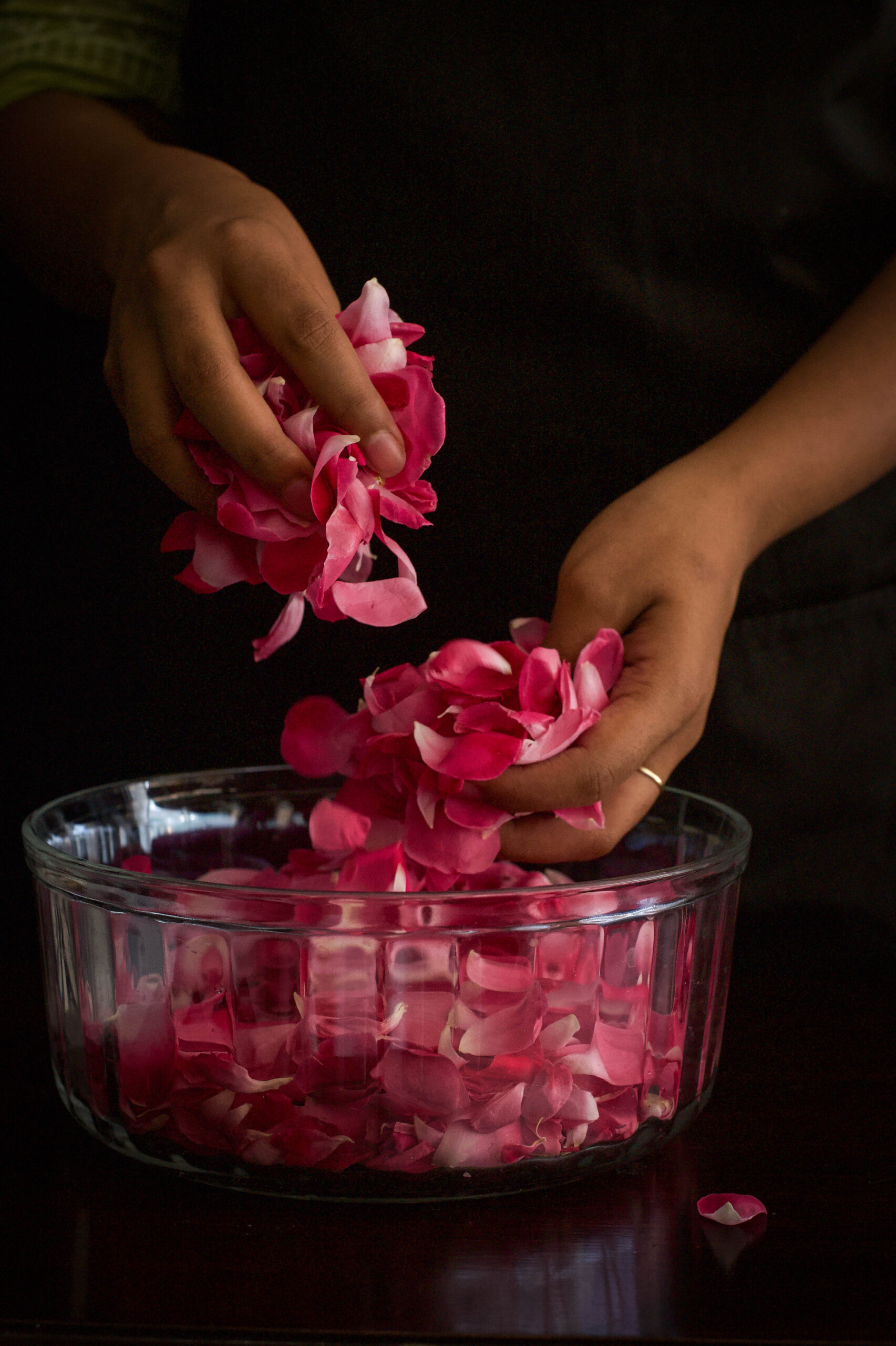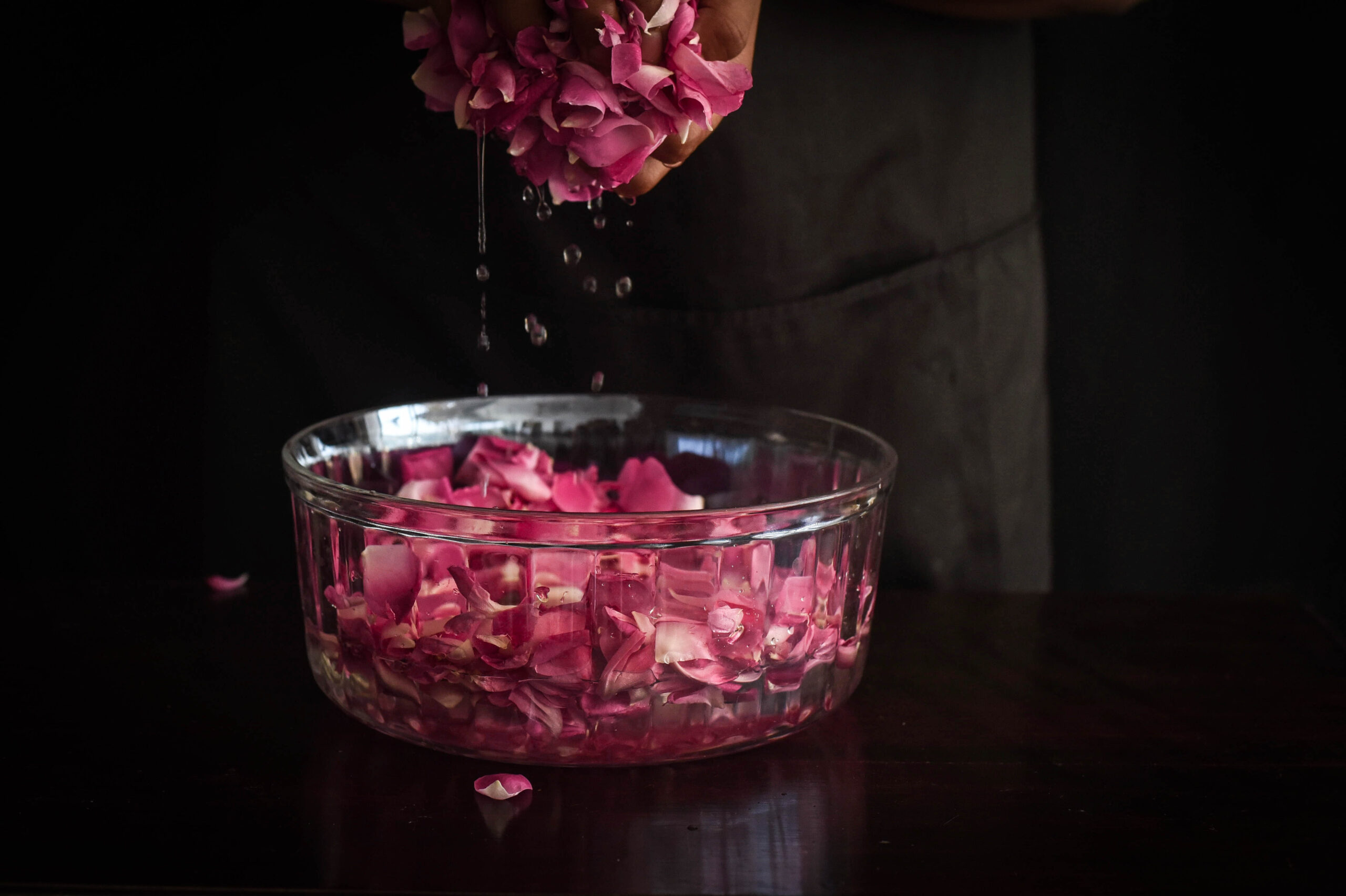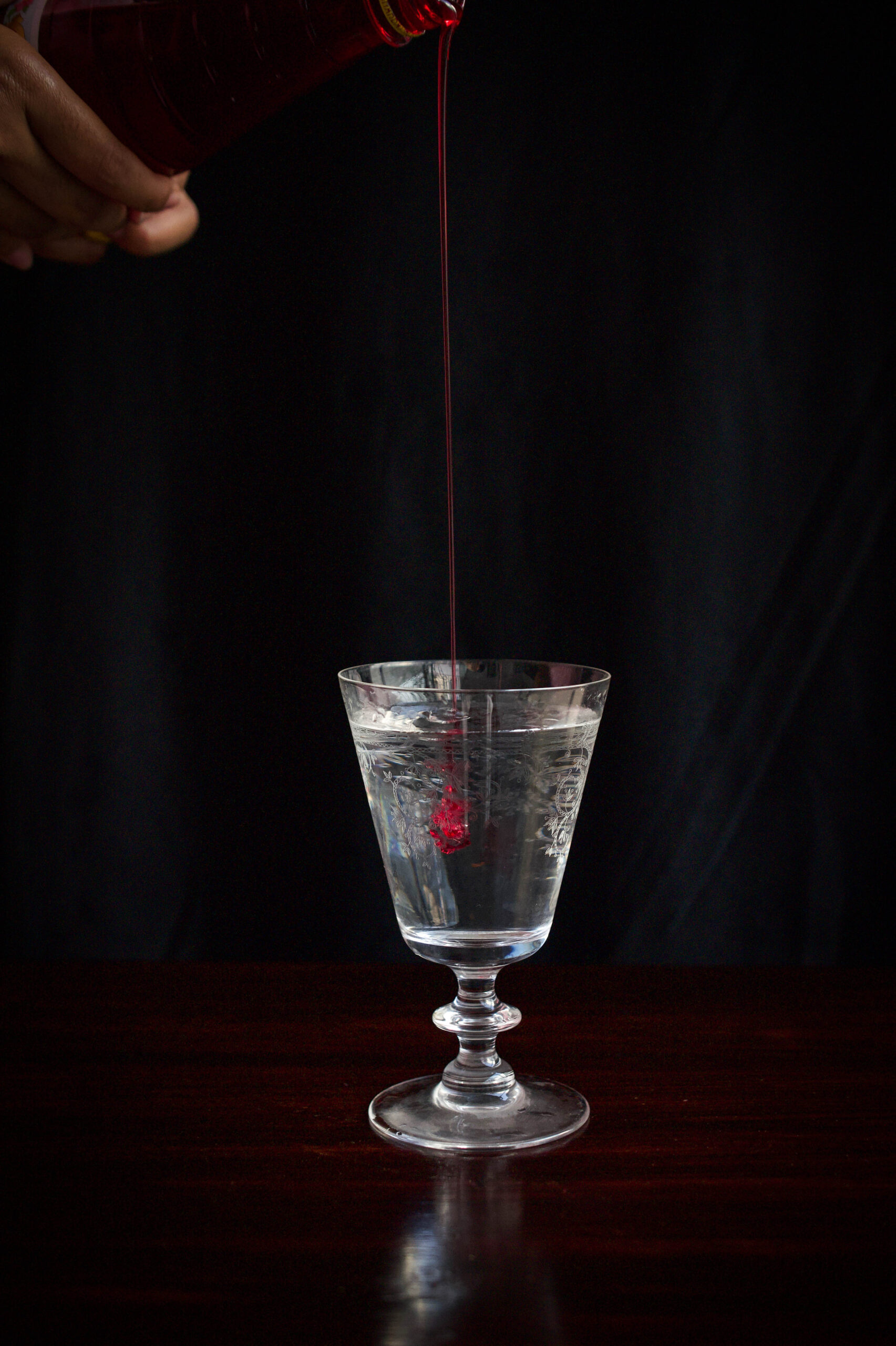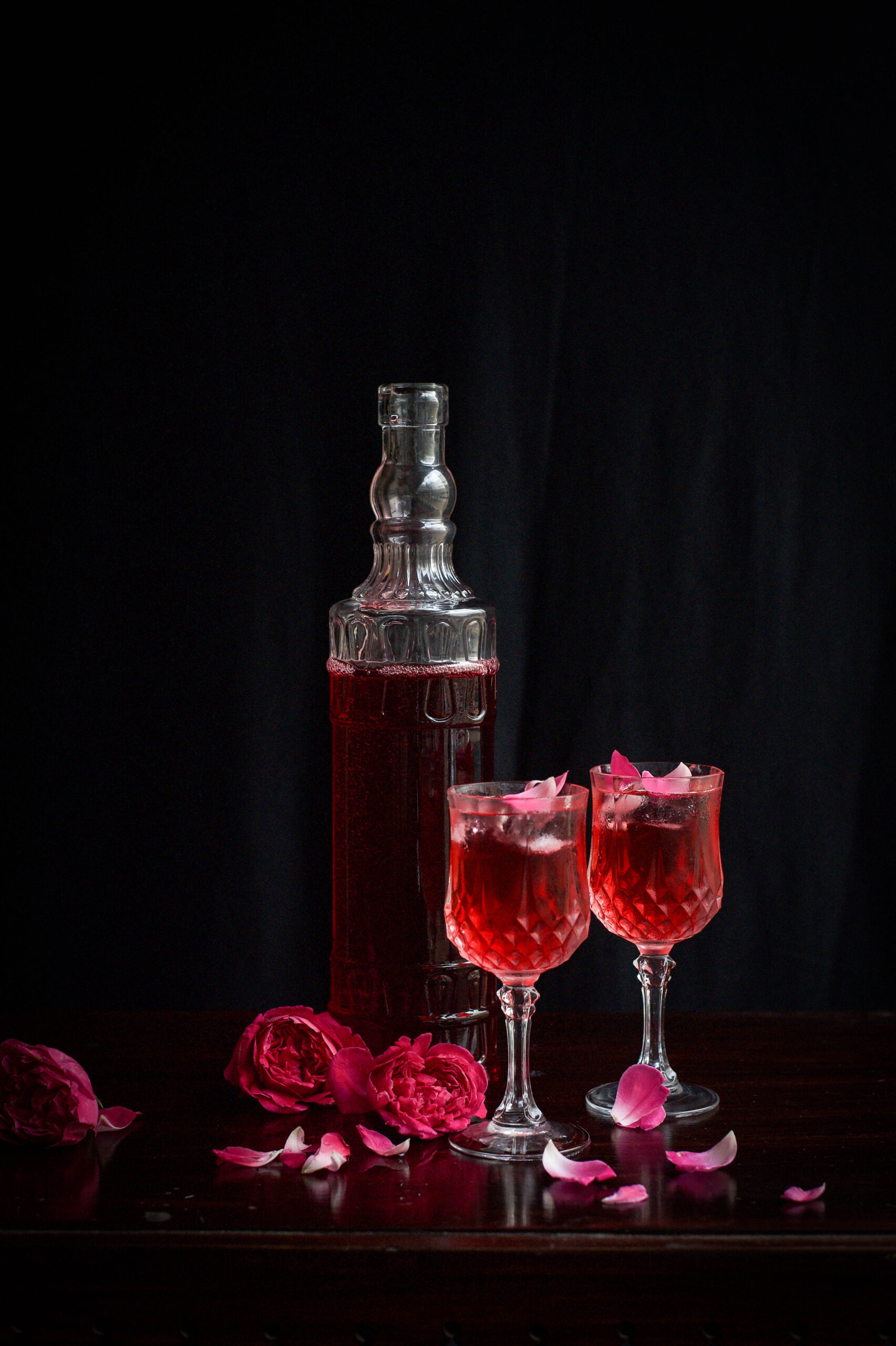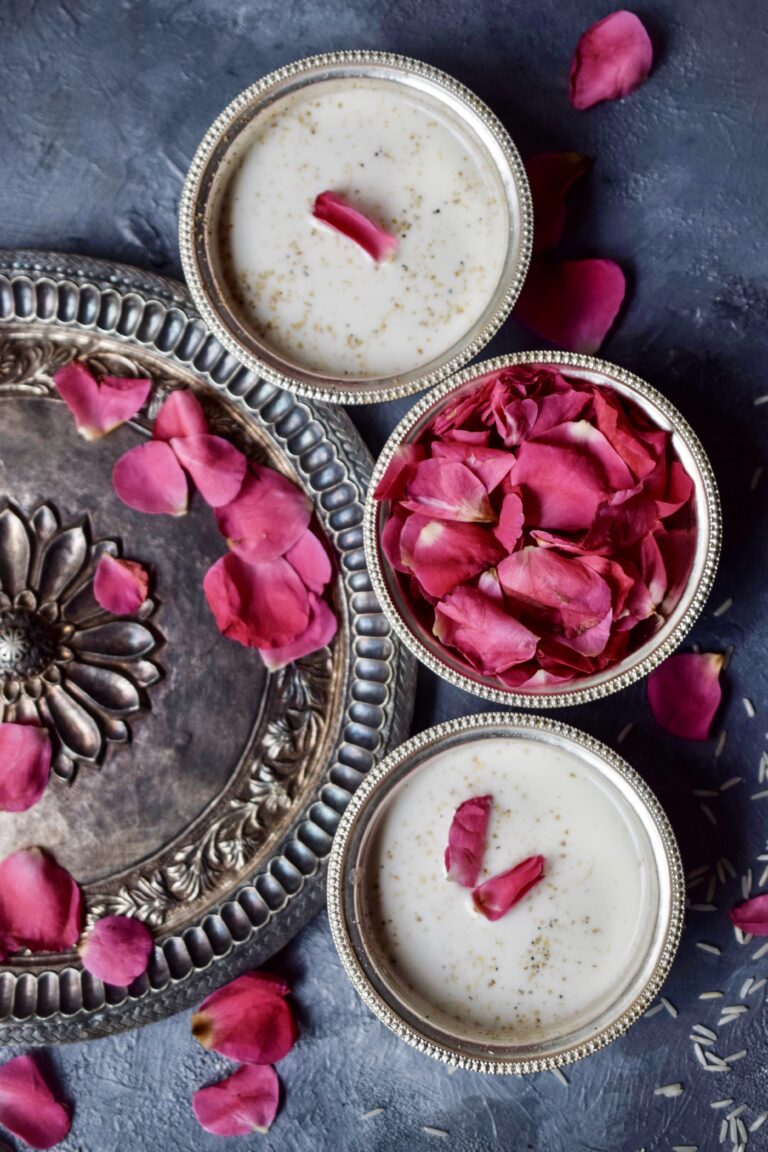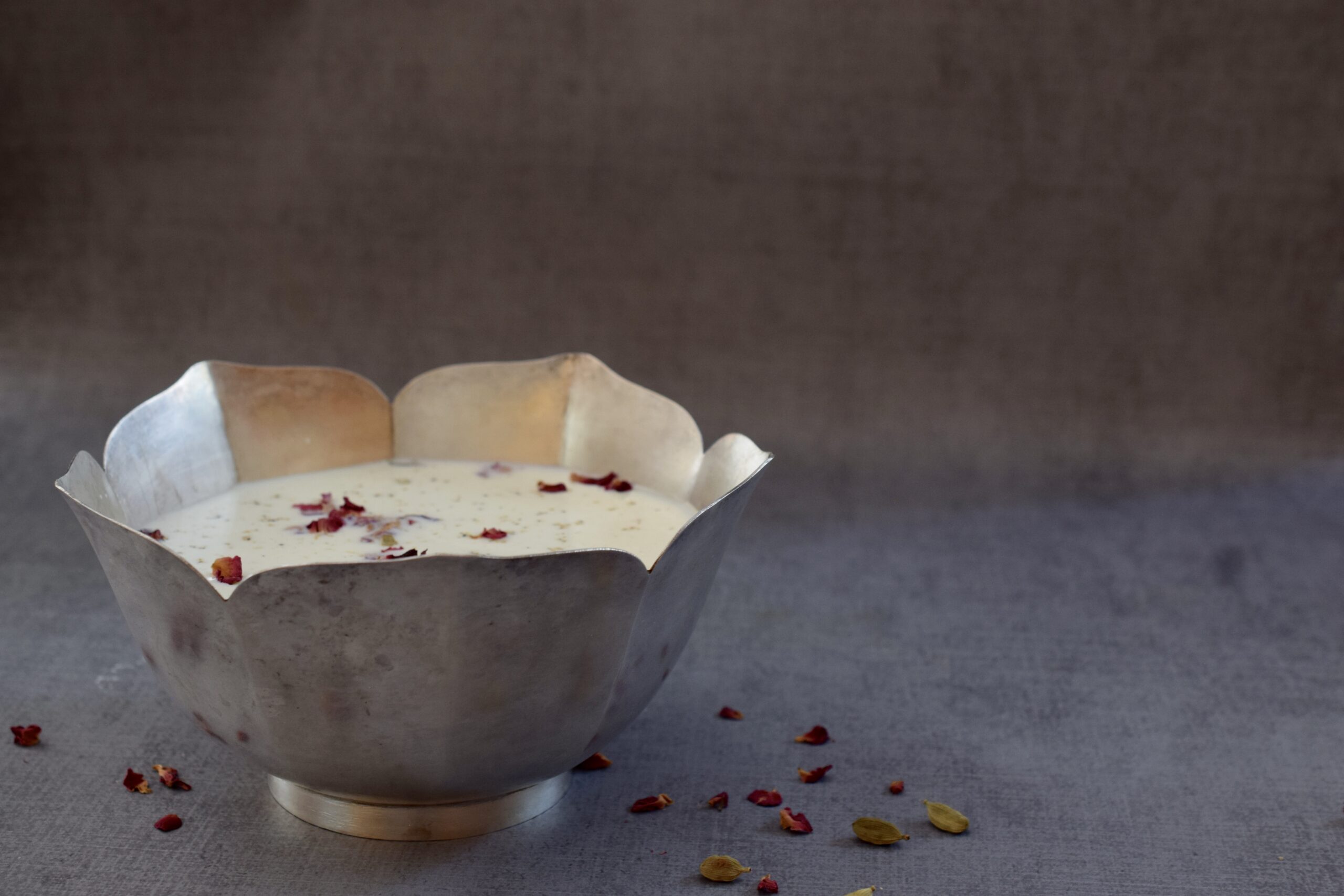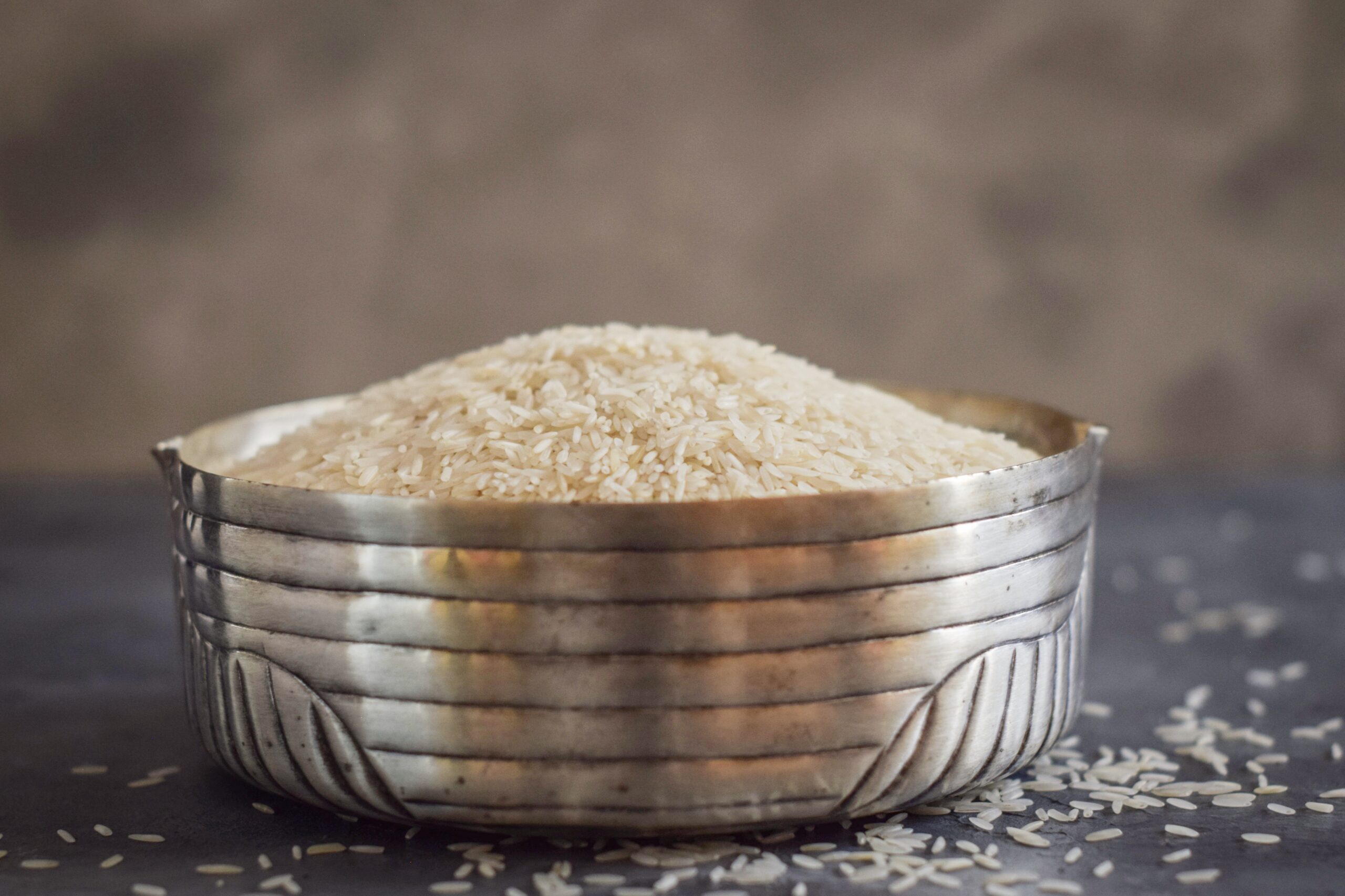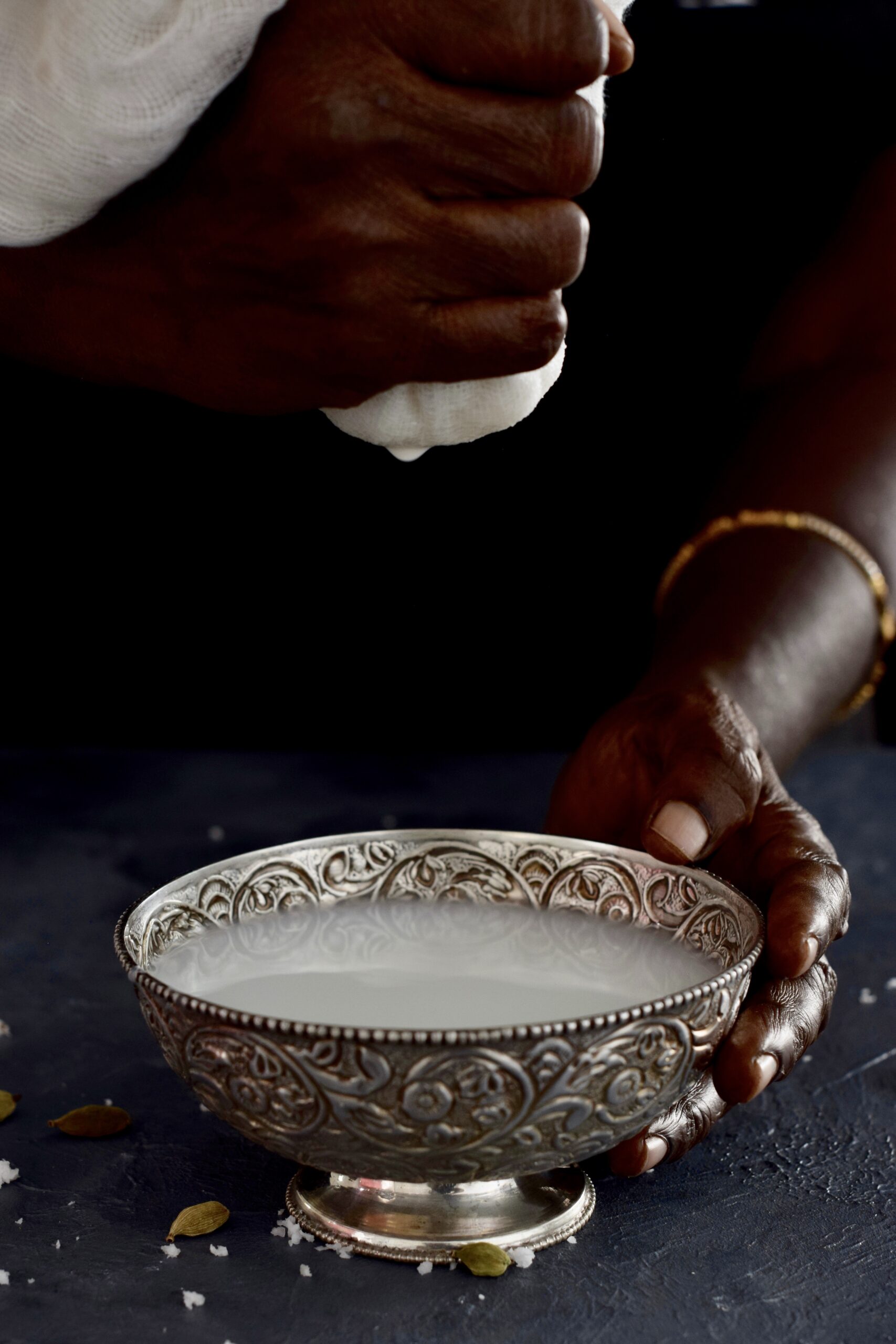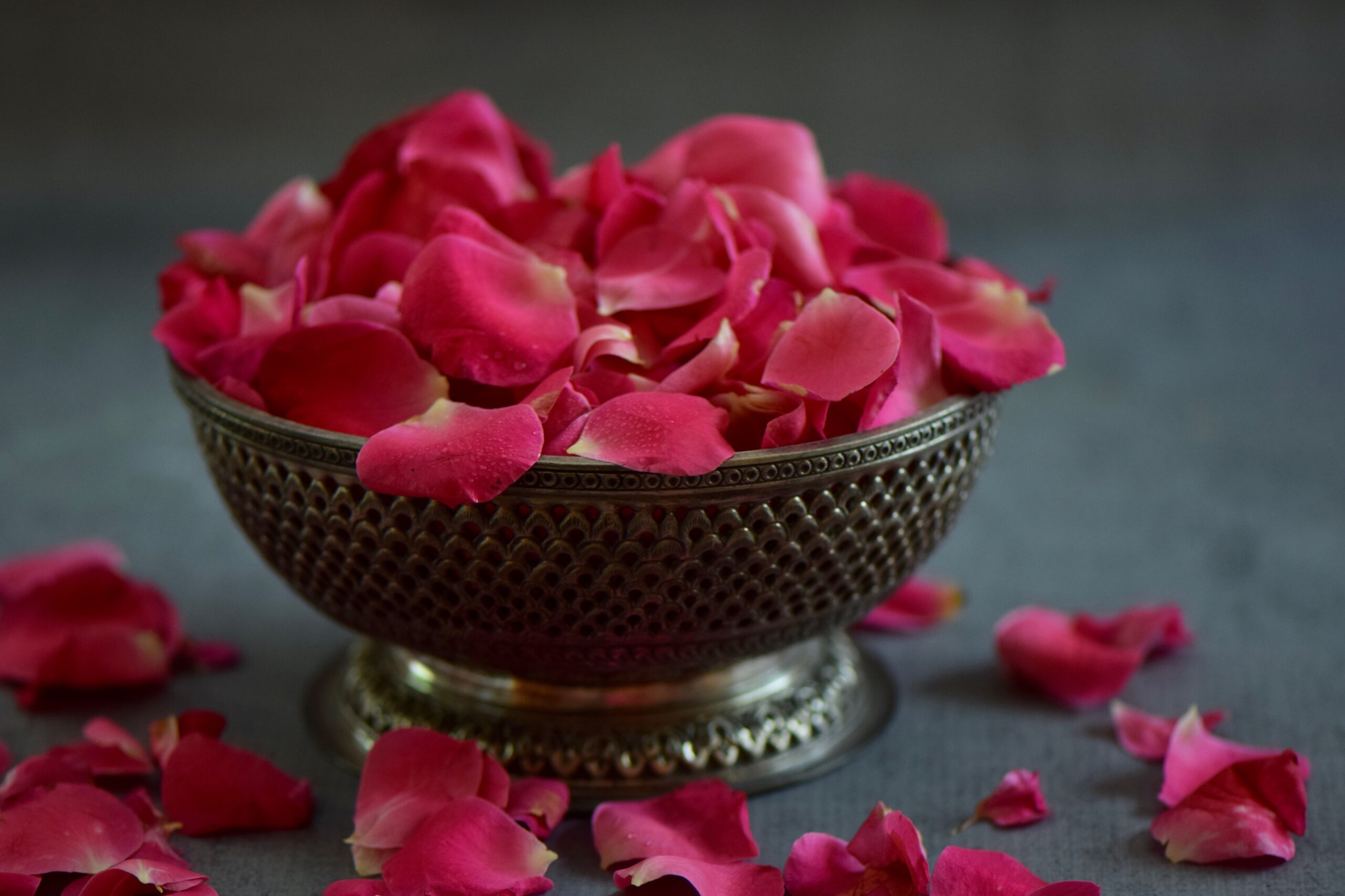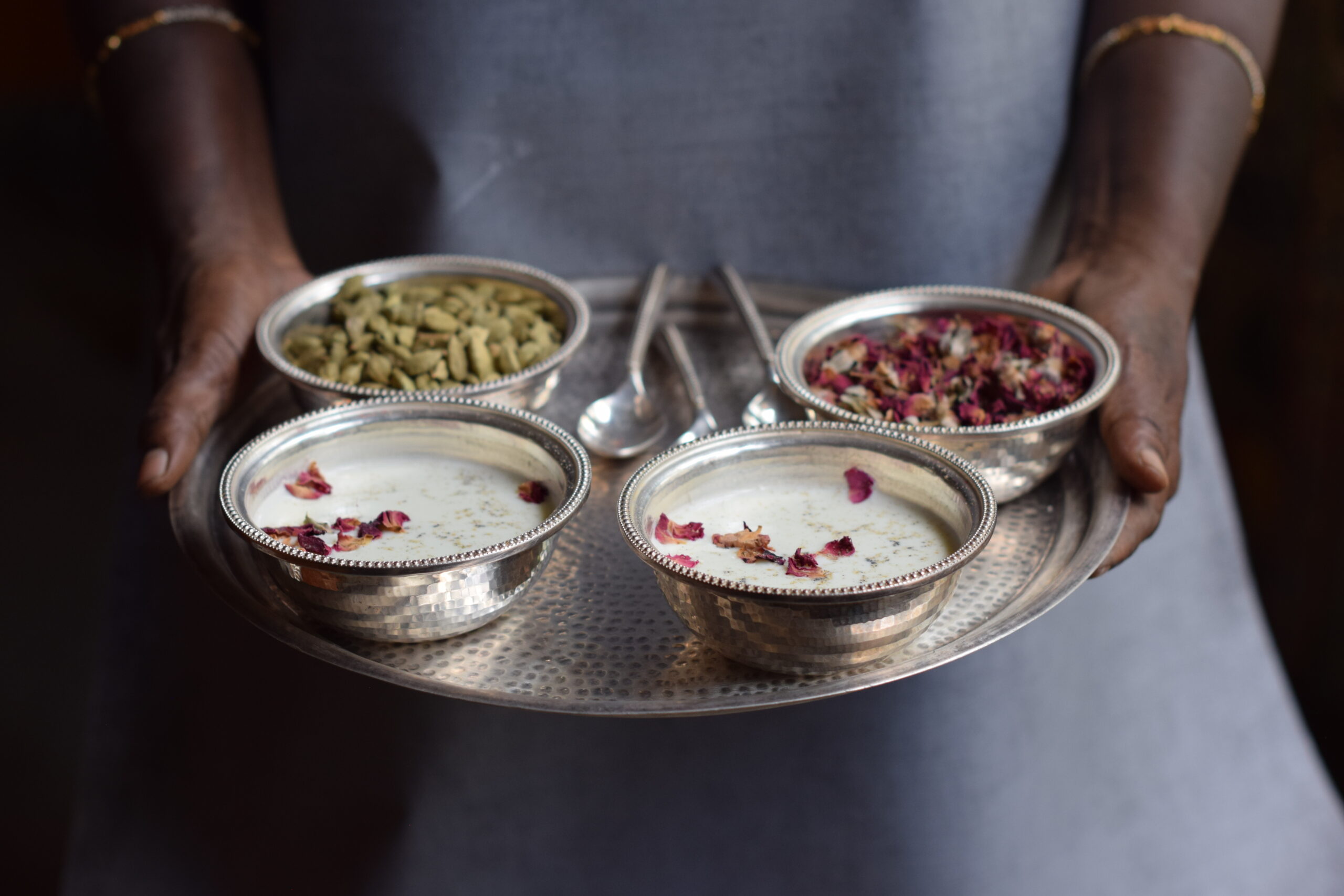Every time our uncle visited from the USA when we were growing up, he would hand my siblings and I a beautiful, round, dark blue tin filled with shortbread cookies. When the tin was opened, these lovely and aromatic delights would be layered inside. As children, we waited for these treats every year and we would inevitably start fighting over them before dividing them up between the three of us. The emptied tin itself was a thing of joy, and never discarded. These precious memories made me smile recently, as I began planning ahead for my Christmas baking here at re:store. I decided to put a batch of rose shortbread cookies in the oven for old times’ sake, and I wanted for you to be able to do the same too.
Do you remember those cookies from far away too? Many of us grew up with these tins of shortbread cookies, and both the contents as well as the packaging itself have a nostalgic quality for us. They are a favourite of my mother-in-law as well, as they were enjoyed by her generation when they were younger, too. It’s funny how our love for this cookie has travelled through generations. My grown-up kids love them, I love them, and their grandmother loves them. Perhaps it is similar in your family as well. Nowadays, I visit London often and buy shortbread cookies there every time. There is something about bringing them back from a trip that just feels special.
There is also a bakery in Pune that makes shortbread cookies that are almost like the European original. These have their own distinct taste, but I would say they are a close cousin. Relatives coming from there sometimes bring me a box of these. That’s right: a box rather than those classic tins are what cookies tend to be packaged in in many places nowadays.
That takes us back to the tins themselves. Back when the cookies were annual gifts from my uncle, I would save the tins and keep various things in it. Handkerchiefs, stationery, school items and so on would go into them. Each time I opened one, the scent of the cookies – already eaten and enjoyed – would still rise from it for quite some time after. That scent itself would make me anticipate my uncle’s next visit, year after year, and it would also seep into whatever I kept in the tin.
I will let you in on a secret: I enjoy collecting anything kitchen-related, and can be a bit of a hoarder when it comes to such objects. So I still have a few of those old cookie tins in my home. When I bake shortbread cookies, I pull a lovely dark blue tin out, line it and store my own homemade cookies in it too. They then evoke the childhood experience all the more. And that lovely buttery, sugary, freshly-baked fragrance is once again retained in that tin for some time after, with any knick-knacks stored in it taking on that aroma too.
Receiving them as a gift is wonderful, and baking them at home brings an equally good feeling. They may not turn out quite like the store-bought ones, but they will be imbued with the joy of making a treat from scratch, which is a pleasure of its own. You can also add personal touches that suit your preferences: for instance, the addition of rose to this recipe is my own take, incorporating a beloved ingredient into the treat. Often, when I eat something that I really love that is a bit difficult to make, I take it up as a challenge to achieve the perfect flavour and taste – or at least the perfect flavour and taste for my version, to be replicated and enjoyed many times over. That’s how it was with these rose shortbread cookies too, and I think that that is the right spirit to approach any cooking and baking in general!
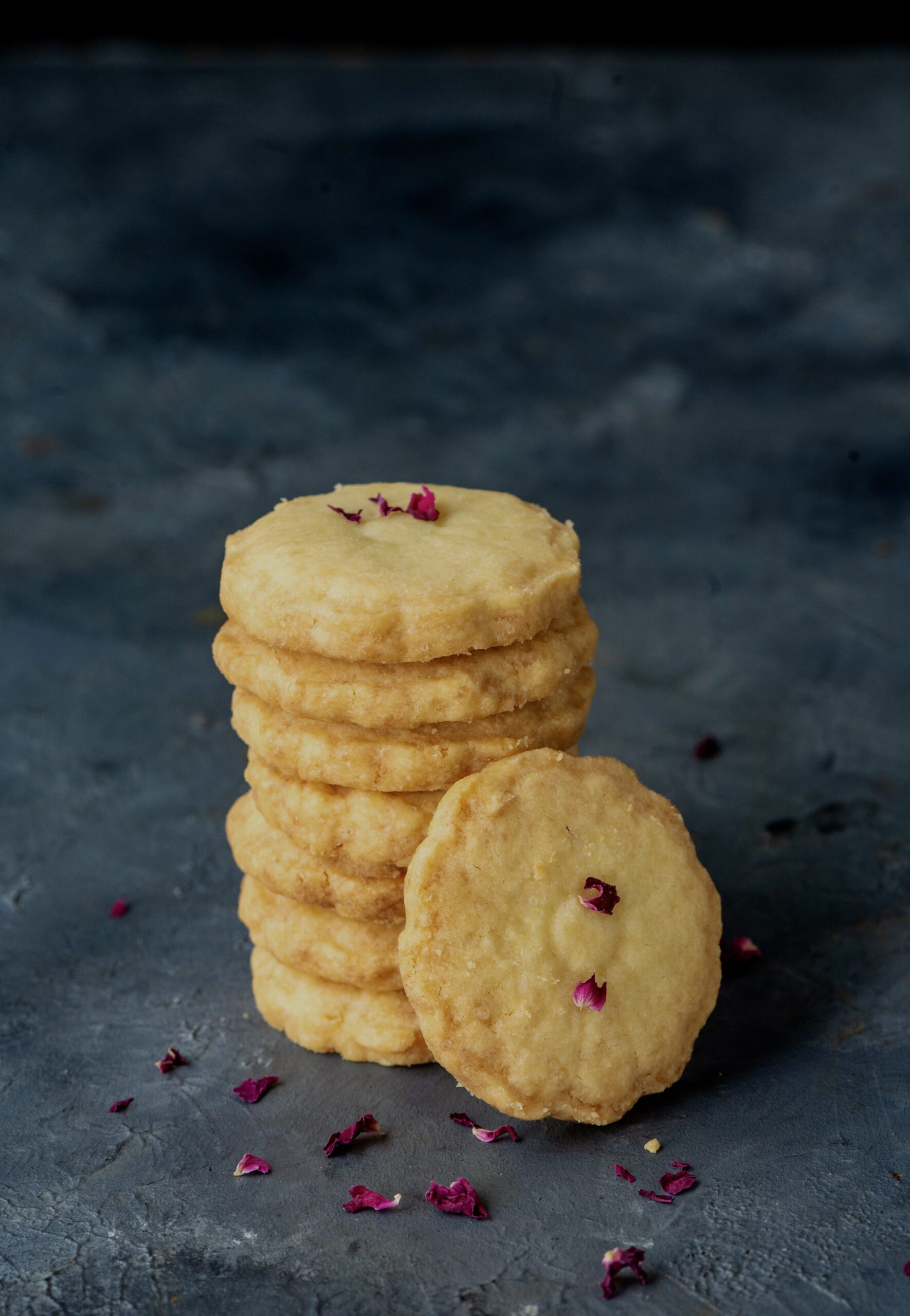
Rose Shortbread Cookies
250 grams cold unsalted butter
50 grams powdered sugar
115 grams sugar
1 heaped teaspoon salt
250 grams maida
2 teaspoons rose water
2 tablespoons rose petals
Using a hand blender or a stand-mixer, beat the butter in a bowl until it is soft. Now, add both sugars along with the salt. Beat for 2 minutes or until the mixture is fluffy and has risen. Add the flour slowly, little by little, and beat on low. Now, add the rose water.
Once it comes together, using your fingertips, fold the dough gently.
Cover with cling film and refrigerate for 24 hours before using. You could also freeze the dough for 3-4 hours before using.
When you’re ready to bake, preheat the oven to 160°C. Line a baking tray with parchment paper.
Make 2 balls of the dough and roll one out to ½ – ¾ inch thickness. Using a cutter, cut into the desired shape. Making sure the cookie dough shapes don’t become too thin else they will spread while baking. Sprinkle rose petals on top.
Gather all remaining bits of the dough and repeat with the other ball.
Arrange the cut cookies in a tray, keeping a distance between each, as they will spread while baking.
Bake until golden. Keep a close watch and make sure they don’t turn too dark or remain partially baked.
Remove the tray from the oven. Allow the cookies to cool in the tray for about 10 minutes. Then, remove and place in airtight tins.
These shortbread cookies are delightful on their own, or with tea. They are sure to evoke some fond memories for you – and perhaps be a part of new ones that you’ll make with your loved ones too. For more baked goodies, do check out my blog archive. If you’re in Chennai and are looking for some special treats for Christmas and New Year, do explore the re:store menu and get in touch!


